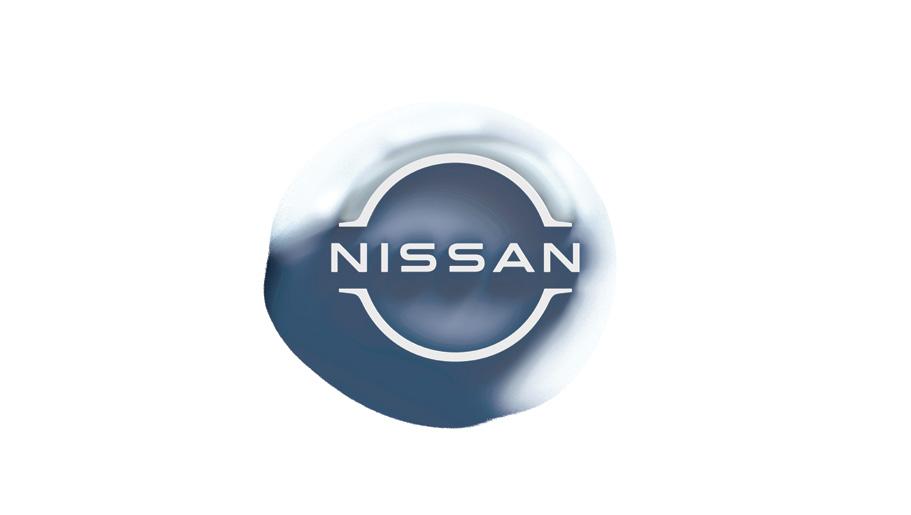OP-ED
Beyond Survival

CONNECTING TRADE PROFESSIONALS WITH INDUSTRY INTELLIGENCE
INTERVIEW
Mastering Warehousing
CHINA
From China to the GCC

OP-ED
Beyond Survival

CONNECTING TRADE PROFESSIONALS WITH INDUSTRY INTELLIGENCE
Mastering Warehousing
From China to the GCC
Tariq Al Wahedi, Group CEO of 7X, is turning the company into more than a logistics giant as he builds a connected force from data to doorstep

New IVECO S-Way: high technology and efficiency on all missions
A wide choice of Euro III / V diesel engines, delivering class-leading power from 360 hp to 560 hp Euro III / 570 hp Euro V and superior fuel economy. 12-speed HI-TRONIX automated transmission with the most advanced technology in its category, electronic clutch and best-in-class torque-to-weight ratio. Full range of fuel-saving devices, such as anti-idling feature, EcoSwitch, Ecoroll and Smart Alternator. Top levels of comfort and safety, with a completely redesigned and reinforced cab, featuring enhanced direct visibility and enlarged cab livability.



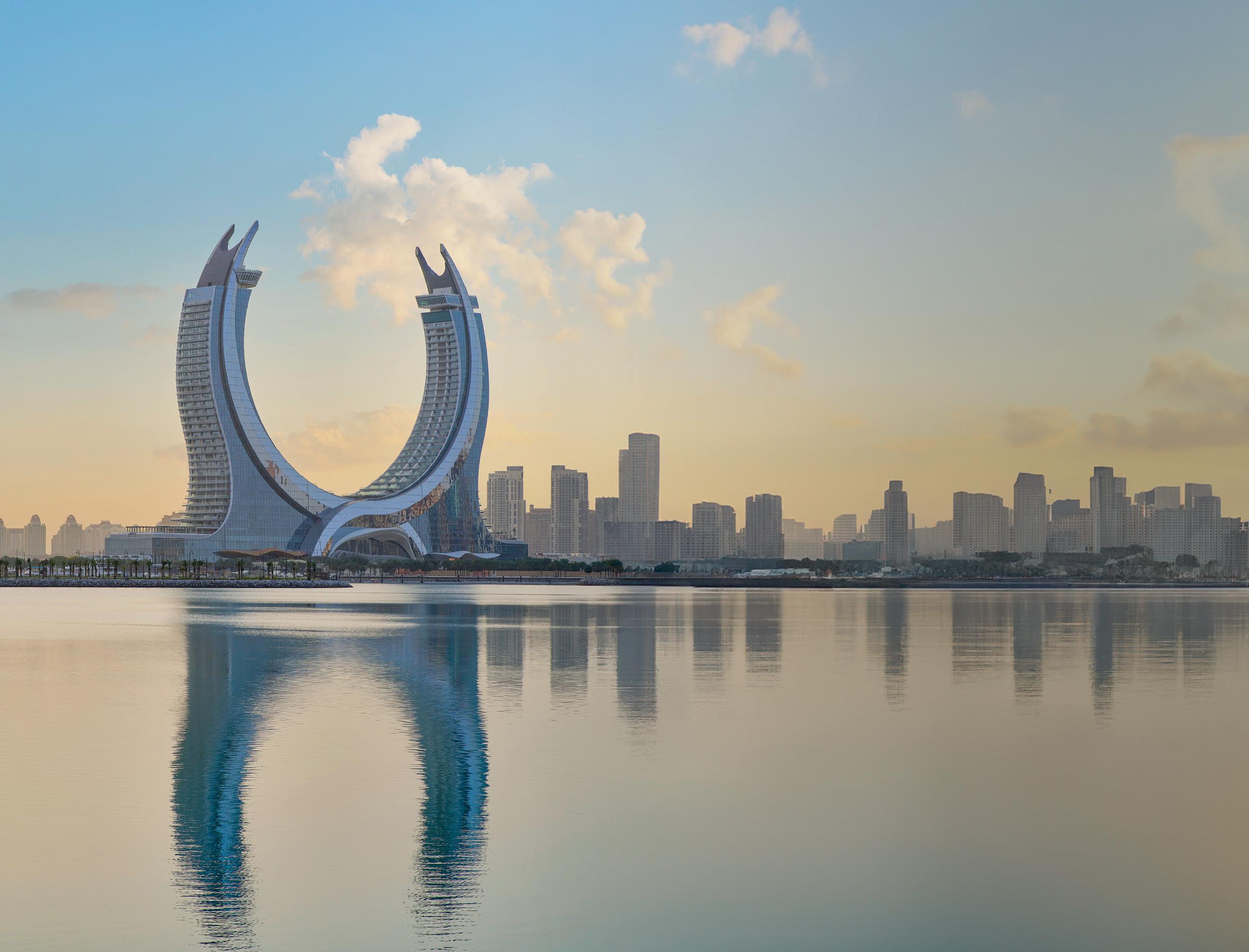
Nestled by the coast of Lusail sits the splendor of Raf es and Fairmont Doha, where luxury is rooted in even the smallest details. Open the doors to mesmerizing hospitality and make memories in a world of sophistication.

CONNECTING TRADE PROFESSIONALS WITH
CEO
Wissam Younane wissam@bncpublishing.net
Managing Director
CEO
Rabih Najm rabih@bncpublishing.net
Wissam Younane wissam@bncpublishing.net
Group Publishing Director
Director
Joaquim D’Costa jo@bncpublishing.net
Rabih Najm rabih@bncpublishing.net
Commercial Director
Group Publishing Director
Andrea Mocay andrea@bncpublishing.net
Joaquim D'Costa jo@bncpublishing.net
Editor-in-Chief
Editor Aya Zhang aya@bncpublishing.net
Vibha Mehta vibha@bncpublishing.net
Digital Reporter
Managing Editor
Reeba Asghar reeba@bncpublishing.net
Kasun Illankoon kasun@bncpublishing.net
Creative Lead
SUBSCRIBE
subscriptions@bncpublishing.net
subscriptions@bncpublishing.net
PO Box 502511 Dubai, United Arab Emirates P +971 4 4200 506 | F +971 4 4200 196
For all commercial enquiries, contact jo@bncpublishing.net T +971 50 440 2706
PO Box 502511 Dubai, United Arab Emirates P +971 4 4200 506 | F +971 4 4200 196
Christian Harb chriss@bncpublishing.net
Design Christian Harb
Editorial Design
Marketing Executive
Rizaldi Febrian
Aaron Joshua Sinanbam aj@bncpublishing.net
Marketing Executive
Digital Media Producer
Aaron Joshua Sinanbam aj@bncpublishing.net
Alexander Bungas
Videographer
Eduardo Buenagua
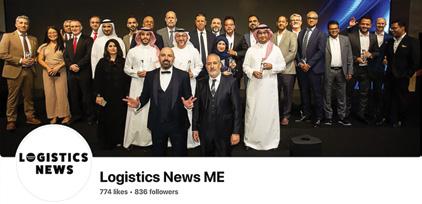
All rights reserved © 2025. Opinions expressed are solely those of the contributors. Logistics News ME and all subsidiary publications in the MENA region are officially licensed exclusively to BNC Publishing in the MENA region by Logistics News ME.
For all commercial enquiries, contact jo@bncpublishing.net T +971 50 440 2706 All rights reserved © 2023. Opinions expressed are solely those of the contributors.
No part of this magazine may be reproduced or transmitted in any form or by any means without written permission of the publisher.
Logistics News ME and all subsidiary publications in the MENA region are o cially licensed exclusively to BNC Publishing in the MENA region by Logistics News ME.
Printed by United Printing and Publishing | upp.ae
No part of this magazine may be reproduced or transmitted in any form or by any means without written permission of the publisher.
Printed by United Printing and Publishing | upp.ae
Images used in Logistics News ME are credited when necessary. Attributed use of copyrighted images with permission. All images not credited courtesy Shutterstock.
In addition to our print edition, we’re bringing you all sorts of industry news on our web mediums. We’re looking forward to interacting with our readers on all of our social media and web platforms. See you on the web!
addition to our we’re bringing you all sorts of industry news on our web mediums. We’re looking forward to interacting with our readers on all of our social media and web platforms. See you on the web!
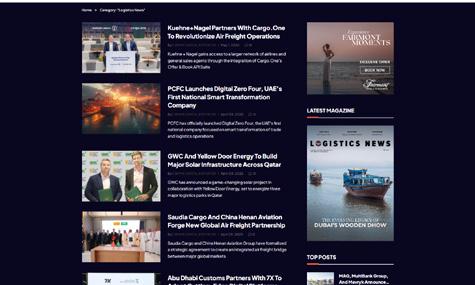


There was a time when logistics quietly supported everything behind the scenes, off the radar. That time is over.
Today, this industry is out front. It’s setting the pace rather than following it. The Middle East is no longer just a link in the global supply chain but the
Xiaoyue (Aya) Zhang xiaoyuezhangg EDITOR’S NOTE
critical backbone of it. Smart ports, autonomous fleets, AI-managed warehouses, carbon-cutting corridors, what used to be buzzwords are now business plans. What used to be future goals are now current operations.
In this issue of Logistics News ME, we go inside that shift.
We look at technologies reshaping efficiency, not years from now, but right now. From Tariq Al Wahedi’s connected logistics network at 7X, to Fawad Ahmed Mian’s AI-driven platform at Mile, and Mohamed Salah Al-Sulaim’s warehousing innovations at MAS Logistics, regional players are designing infrastructures that answer to speed, scale, and sustainability all at once.
Yes, the challenges are real, from regulatory friction to talent shortages and geopolitical pressure, but the progress is undeniable. The momentum is regional, and the message is that logistics in fact isn’t waiting anymore.
Neither should you.
Aya Zhang Editor aya@bncpublishing.net











































































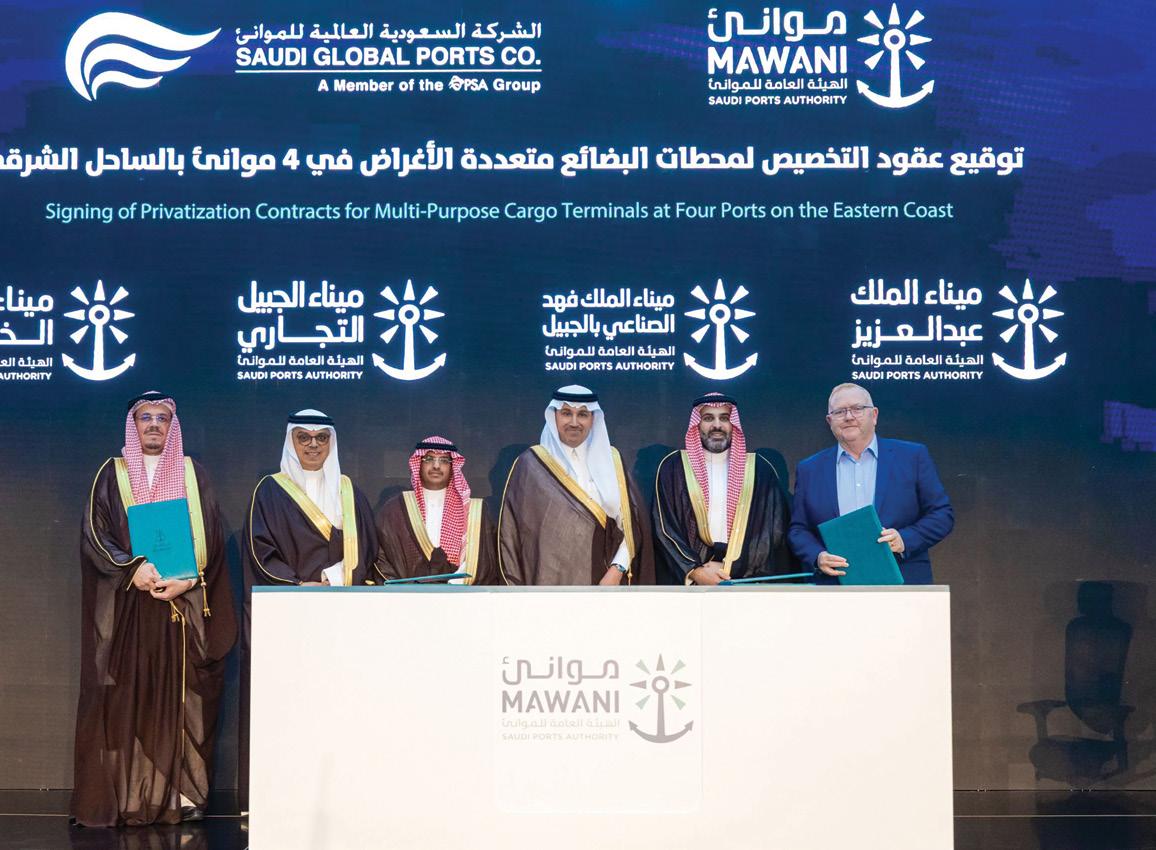
Saudi Global Ports Group (together with its subsidiaries, “SGP”), through its subsidiary, Modern Port Services Company Limited (SGP Multipurpose Terminals, “SGPMP”), has been awarded four 20-year concession agreements by the Saudi Ports Authority (“Mawani”) to operate multipurpose terminals along the Eastern Coast of Saudi Arabia, located at King Abdulaziz Port Dammam (“KAPD”), Jubail Commercial Port (“JCP”), King Fahad Industrial Port Jubail (“KFIP”) and Ras Al-Khair Port (“RAK”). The concession agreements were signed by the CEO of SGP Mr. Rob Harrison and the Acting President of
Mawani Mr. Mazen bin Ahmed Al-Turki, and witnessed by His Excellency the Minister of Transport and Logistics Services H.E. Saleh Al Jasser, the Chairman of Board of Saudi Global Ports, Eng. Abdullah Al Zamil and Vice Chairman of the Board of Saudi Global Ports, Mr. Bakr AlMuhanna.
An established terminal operator in Saudi Arabia, SGP is currently the operator of container terminals at KAPD and the rail intermodal Riyadh Dry Port Ecosystem (Riyadh Dry Port, Riyadh Empty Yard and Dammam Empty Container Yard) and also has an ongoing investment to develop the Dammam Integrated Logistics Zone (“DILZ”). In 2024, SGP handled
more than 4 million TEUs across its ecosystem of seaports and inland terminals, cementing itself as a leader in the industry.
Under the four concession agreements, SGP plans to invest more than 700 million Saudi Riyals (~USD 187 million) to upgrade the terminals and purchase new equipment. SGP also aims to integrate the four multipurpose terminals with its existing operations across Dammam and Riyadh, and to transform the terminals into more efficient and resilient gateways supporting the robust growth in the Kingdom, which will be key for the ongoing and upcoming mega projects in the country.
Autoworld International FZCO, a leading regional distributor for India’s Bajaj Auto Ltd, is investing AED 45 million to develop a new logistics and distribution hub in the Jebel Ali Free Zone (Jafza). The facility will enhance Autoworld’s ability to serve rapidly growing markets across Africa and the Middle East with affordable, fuel-efficient two- and three-wheelers.
Spanning over 162,000 sq. ft, the facility will include an assembly plant for Bajaj motorcycles and three-wheelers, as well as storage and distribution space for spare parts, tyres, and lubricants. Scheduled for completion by 2026, the hub will also support the introduction of new product lines through partnerships with international manufacturers, strengthening the company’s presence.
The global two- and three-wheeler market is expanding quickly, particularly in emerging economies where urbanisation, e-commerce, and last-mile delivery needs are reshaping mobility needs. Industry analysts project Africa’s two-wheeler market alone will grow at nearly 5% annually, driven by demand for affordable and fuel-efficient vehicles.
“This facility marks a major step forward in our growth strategy. Jafza’s connectivity, infrastructure, and business-friendly environment have helped us serve high-growth markets across Africa and the GCC since 2008. With this investment, we are living up to our commitment to the region and to the Bajaj brand,” said Vishal Kumar Lakhani, Director at Autoworld.
Abdulla Al Hashmi, Chief Operating Officer, Parks and Zones, DP World GCC, added, “Autoworld’s expansion underscores the strength of Jafza’s integrated trade and logistics ecosystem which now connects 940 automotive companies from 88 countries. Last year alone, Jafza supported automotive
trade valued at nearly AED 102 billion. We are proud to support long-term partners like Autoworld, who are helping connect world-class manufacturing with high-potential markets through Dubai.”
The project is expected to create over 100 direct and indirect jobs, supporting Dubai’s growing mobility and logistics ecosystem. It also strengthens the UAE’s role as a central trade hub connecting manufacturers with global markets.
The agreement was officially signed in the presence of Abdullah Bin Damithan, CEO and Managing Director of DP World GCC; Abdulla Al Hashmi, Chief Operating Officer, Parks & Zones at DP World GCC; Kumar Motiram Lakhani, Chairman of Autoworld; Monish Lakhani, Managing Director at Autoworld and Vishal Lakhani, Director at Autoworld.
Autoworld has operated from Jafza for over 16 years, leveraging its world-class multimodal infrastructure to distribute Bajaj vehicles across 25+ countries. The move aligns with DP World’s broader strategy to develop automotive trade in the region, including its plan to build the world’s largest car market in Dubai, which is expected to double current annual sales of AED 6.8 billion.

J&T Global Express Limited, a global logistics service provider, announced its key operating metrics for the second quarter and first half of 2025. For the second quarter ended 30 June 2025, the company handled approximately 7.39 billion parcels, a 23.5% year-onyear increase, with an average daily parcel volume of 81.2 million.
Meanwhile, in the first half of 2025, the company’s total parcel volume reached 13.99 billion parcels, a 27% year-on-year increase, with an average daily parcel volume of 76.9 million. In both the second quarter and the first half of this year, J&T’s
grew by 57.9% year-on-year to 3.23 billion, with an average daily volume of 17.7 million.
The strong performance in Southeast Asia during the period was primarily driven by J&T’s strengthened strategic partnerships with mainstream e-commerce platforms, local brands, and clients across various industries, fostering mutually beneficial growth.
In the second quarter, increased promotional efforts and a wider range of product categories from e-commerce platforms significantly boosted business volume. As
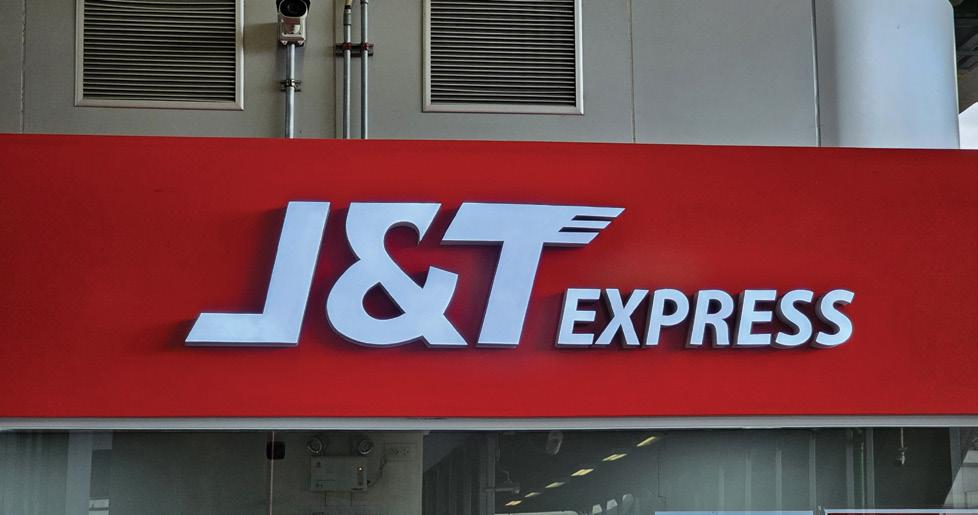
total parcel volume reached new highs, with parcel volumes in all major markets continuing to achieve double-digit growth.
As the leading express delivery company in Southeast Asia for five consecutive years, J&T Express achieved robust growth in the region during the second quarter of this year. Parcel volume in Southeast Asia reached approximately 1.69 billion, marking a 65.9% year-on-year increase – the fastest single-quarter growth since the company’s listing. The average daily parcel volume stood at 18.5 million. For the first half of the year, the company’s Southeast Asia parcel volume
an independent enabler for e- commerce, J&T Express successfully capitalised on the overall growth opportunities within the region’s e-commerce sector. This was achieved by leveraging J&T’s high-quality, cost- effective services, thereby consistently solidifying its market-leading position.
Concurrently, the company’s partnerships with local brands across Southeast Asian countries and the proactive expansion into non-platform parcel services have also yielded significant results, becoming another crucial engine driving business growth in Southeast Asia.
As part of its ongoing efforts to develop international economic relations and facilitate trade between Dubai and its trading partners, Dubai Customs hosted an expanded meeting with the participation of a delegation from the Republic of India, headed by Arti Agarwal Srinivas Director General, Directorate General of Systems and Data Management at the Central Board of Indirect Taxes and Customs (CBIC).
A delegation from DP World also participated in the meeting. The meeting tackled ways to enhance cooperation in inter-MENA trading trends and supply chain, logistics services, fast-tracked clearance procedures, and customs facilitations used to accelerate trade movement and increase the flow of goods. The meeting also discussed the development of the India-Middle EastEurope Economic Corridor (IMEEC) and its associated virtual trade corridor.
At the beginning of the meeting, His Excellency Dr. Abdulla Busenad, Director General of Dubai Customs, welcomed the visiting delegation, emphasising that this visit is part of the Dubai Economic Agenda’s vision to enhance Dubai’s role as a global trade and logistics hub. It also underscores the strength of relations between Dubai and India, which are witnessing rapid growth across various economic sectors. Dr. Busenad added that Dubai Customs is committed to facilitating
trade with its key Asian partners, the first one of which is the Republic of India. The overarching goals are to promote investment, streamline trade processes, and enhance Dubai’s standing in global competitiveness rankings.
For her part, the head of the Indian delegation, Arti Agarwal Srinivas, praised the significant developments witnessed by Dubai’s customs and logistics system, emphasising that India views Dubai as a pivotal partner in supporting the smooth flow of supply chain and a strategic gateway to markets in the Middle East, Africa, and Europe.
The meeting was attended by Mansoor Al-Malik, Executive-Director for Policies and Legislation Division at Dubai Customs, and Ateeq Al Muhairi, the Executive Director of the Customs Development Sector at Dubai Customs. “The MAITRI platform” was reviewed; it is a single digital platform that aims to facilitate the data exchange between Customs and Port systems in the UAE and India. This aims to increase the movement of goods, reduce delays and customs costs, and open up broader horizons for logistics partnerships that serve common interests and keep pace with future ambitions.
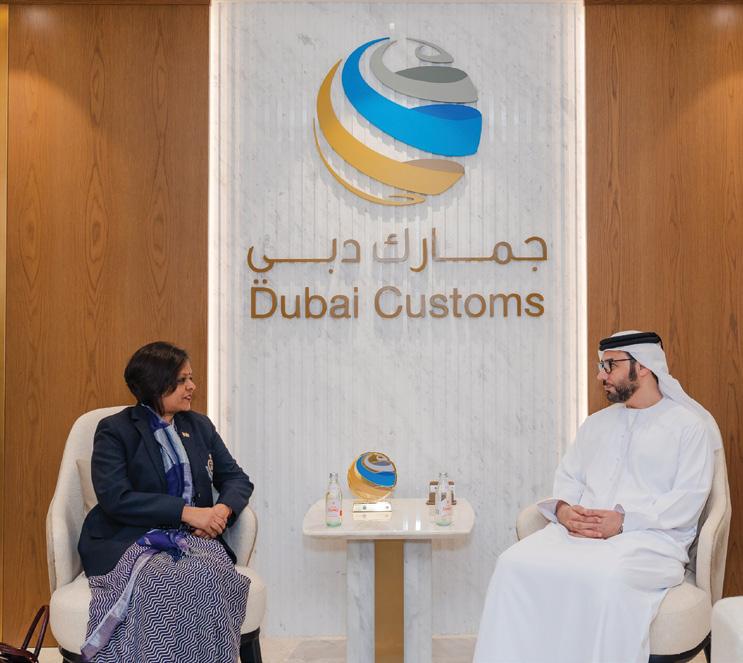

Dr. Shereen
The transport sector is responsible for nearly 25 per cent of the global carbon emissions. Therefore, any credible effort towards net-zero targets has to consider strategies for optimising and innovating all modes of transport. Historically, the economy of the United Arab Emirates (UAE) relied heavily on oil; however, this is no longer the case. The major transition towards a diversified and sustainable economy depends on innovative solutions for energy diversification, environmental resilience and economic transformation.
The UAE Net Zero by 2050 strategic initiative guides the country’s sustainability journey. Transport, as a carbon-heavy sector, is vital for this transition. As part of the larger Energy Strategy 2050, the government envisions tripling the share of renewables in the power mix and intends to invest AED 150 to AED 200 billion by 2030 to meet the country’s growing energy demand, driven by a rapidly expanding economy.
Recent statistics in the UAE indicate that road transport alone accounts for around 22 per cent of the country’s CO2 emissions. This urges the need for an integrated solution that includes infrastructure development, policy innovations, and behavioural shifts. All are currently being progressed through national and emirate-level initiatives.
Electrification is a key component of sustainable transportation. The UAE is launching an ambitious programme to lead the region in electric mobility. According to a recent PWC report, Dubai’s Roads and Transport Authority (RTA) aims for 50 per cent of all vehicles in the city to be electric or hybrid by 2030. The ATA announced a detailed roadmap to meet that target. Abu Dhabi’s Department of Energy supports the large-scale adoption of EVs by providing subsidies and establishing publicprivate partnerships. Masdar, the UAE’s top renewable energy company, laid the foundation for this change as part of this shift. Though Masdar is recognised globally for its solar and wind energy projects, it has progressively invested in clean transport infrastructure and innovation. Masdar City is a living hub for sustainable urban mobility, with autonomous EVs and pedestrian-friendly layouts that reduce automobile reliance. Additionally, the UAE government has heavily invested in increasing the charging infrastructure to respond to the surge in demand for EVs. According to PwC,
Dubai aims to improve the city’s public Green Charging Station network by 170 per cent, from 370 in 2023 to 1,000 by 2025.
Despite the UAE’s ongoing efforts toward sustainable transportation, numerous challenges must be addressed to guarantee a green shift. One primary concern with EVs is range anxiety. This was augmented by the dispersion of charging stations, especially on long routes between Emirates and in remote areas. This raises serious concerns about the reliability of route planning and service continuity for a logisticsdependent economy.
Up-front costs for EVS remain relatively high. For many fleet operators, the transition presents a challenge, despite the longterm fuel and maintenance savings. Similarly, the logistics sector still relies heavily on diesel-powered heavy vehicles, which are a major source of carbon emissions, particularly in freight-intensive supply chains.
The UAE addressed these challenges by implementing an integrated strategy that considered various dimensions. One dimension offered economic incentives such as toll exemptions and discounted vehicle registration that should support logistics companies in reducing their costs while benefiting from using lowemission vehicles. The strategy also focuses on investing in electrified public and freight transport infrastructure, covering
urban and distribution networks. This is part of a long-term shift toward decarbonised urban mobility.
Despite these challenges, the UAE government aims to target 42,000 EV vehicles by 2030. The EV sales forecast predicts a rise in sales with a compound annual growth rate (CAGR) of 45.84% from 2024 to 2032. According to Dubai Electricity & Water Authority DEWA, in July 2023, EVs could constitute up to 25 per cent of new passenger and light commercial vehicle sales by 2035. Etihad Rail, in 2024, announced that its operations are forecast to reduce CO2 emissions by 21 per cent per year from the UAE’s road transport sector by 2050, if freight transport is shifted from road to rail. For every train trip made, Etihad Rail can remove 300 trucks from the streets, equating to 8.2 million tonnes of CO2 annually.
The UAE is piloting hydrogenpowered transport solutions for industrial and heavy-duty applications—an innovation that, if scaled effectively, could redefine the sustainability landscape of freight mobility in the region. However, with the UAE’s current contracts concerning the exportation of hydrogen and ongoing international conversations about future cross-border trade in clean hydrogen, one key concern is whether the UAE intends to prioritise green hydrogen exports or local consumption. The UAE remains heavily reliant on fossil fuels for its energy and electricity mix. The country’s initial focus is
likely to shift towards increasing deployment of renewable energy due to the significant potential of new renewable capacity in decarbonising the country’s utilities and economies.
The UAE’s sustainability path in the mobility sector is emerging with a clear direction guided by innovation, evolving regulations, and incentives. The UAE has demonstrated a strong alignment between the decarbonisation of the mobility sector and its national energy strategy, focusing on establishing global partnerships and investing in renewable energy infrastructure. This qualifies the UAE as a leading country in setting a benchmark for a climate-forward transport model. However, sustaining these efforts requires continuous innovation, stakeholder engagement and policy development. Key enablers for a seamless, low-carbon transport ecosystem include AIdriven traffic management and mobility-as-a-service (MaaS) platforms. Moreover, behavioural change and education campaigns that alter societal attitudes toward green mobility, particularly among younger generations, will enhance awareness and cultivate a culture of sustainability and champions.
As the UAE accelerates its transition toward sustainability, positioning transportation as a cornerstone of decarbonisation efforts represents an environmental imperative and a strategic lever to propel the nation’s vision for a green, techdriven, and equitable tomorrow.
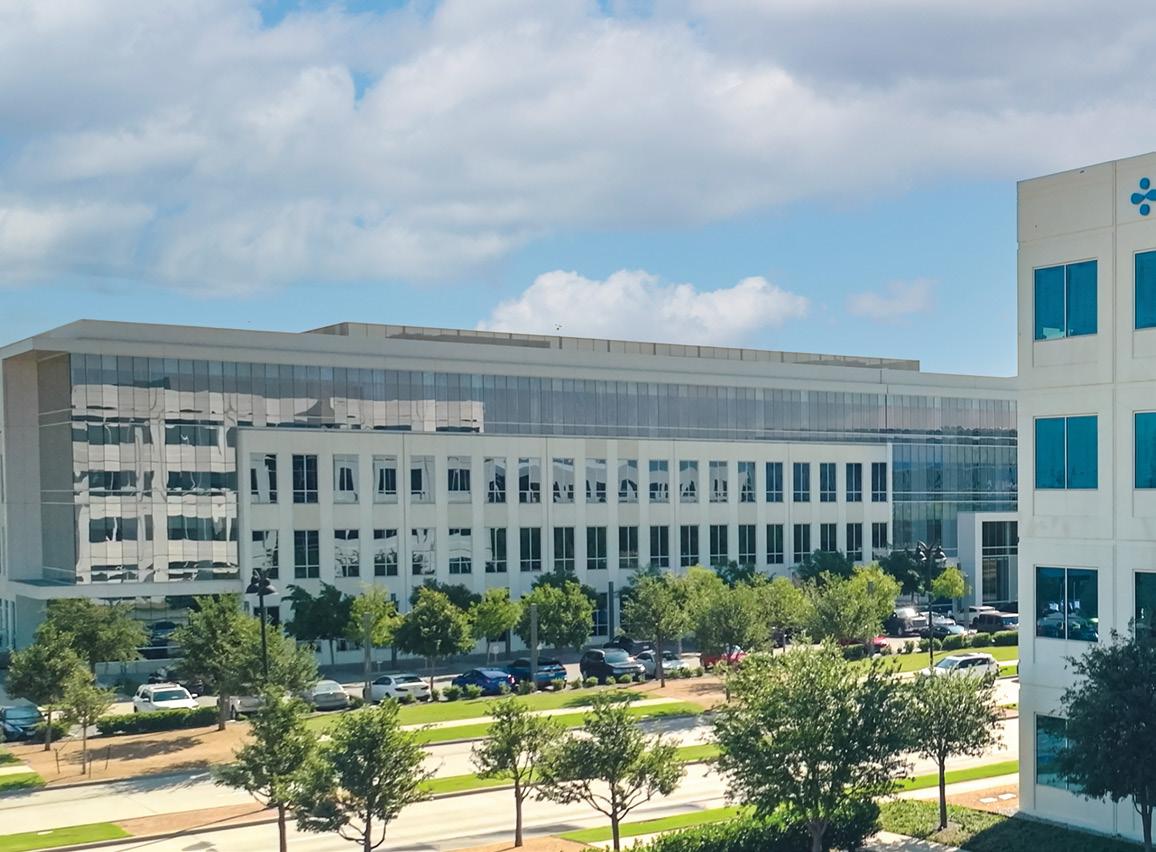
Rodrigue Nacouzi, Founder and CEO of Transcorp International
Global supply chains remain in constant turmoil, with many organisations facing unprecedented levels of disruption to their business operations. Amidst an unfavourable global economic climate, with limited indications of improvement, consumer confidence remains persistently low.
International trade tensions and evolving tariffs continue to challenge supply chains worldwide, with ripple effects felt across markets. For example, ongoing US-EU tariff adjustments and trade negotiations between the UK and the US create uncertainty that can disrupt supply routes and costs.
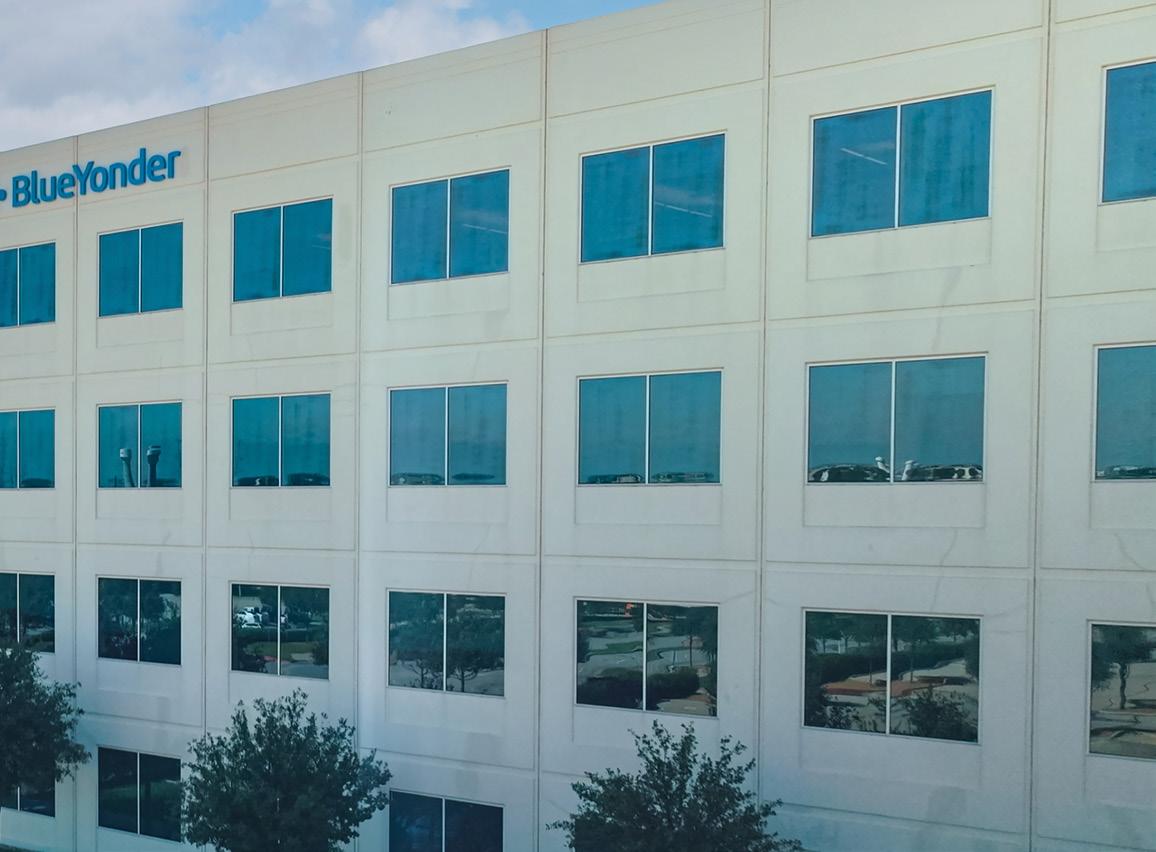
Yet, amid this turbulence, the UAE continues to demonstrate resilience. Positioned as a key logistics and trade hub in the Middle East, the country’s rapidly growing non-oil trade surged to a record AED 3 trillion (USD 817 billion) in 2024, up 14.6% from the previous year, as it leans on strategic trade deals to drive future growth.
Perhaps the UAE’s promising progress is an outlier, but activity overseas highlights the critical need for resilient and agile supply chains to navigate both global disruptions and regional developments.
Add in increased costs, labour shortages, rising geopolitical
tensions, cybersecurity attacks, and weather-related disasters, and it’s clear that a state of perpetual instability is becoming the norm for today’s supply chains. In the UAE, companies must also consider region-specific risks such as port congestion during peak trade seasons, crossborder logistics dependencies, and extreme weather events like sandstorms or flooding, all of which can disrupt supply and distribution timelines.
Senior executives agree. In Blue Yonder’s recent survey, 84% said they had encountered disruptions within their supply chain over the past year. This illustrates the need to be prepared for the unexpected, understand the
potential consequences, and have a plan in place to mitigate such risks.
But how can organisations go about creating a strategy for events that are, by their nature, unpredictable?
The answer is by building a comprehensive plan that brings together the capabilities, processes and technologies needed to continue operating efficiently, come what may.
The first step is to create an overarching strategy that encompasses the entire supply chain. Having visibility across

all areas will support synchronised planning and communication across disparate functions.
By bringing together teams and processes, organisations can start to overcome the traditionally fragmented approach to supply chain management. Uncoordinated procedures inevitably create an inefficient and weaker supply chain, which makes it particularly vulnerable to disruptions.
Whereas, resilience is strengthened by collaboration between functions, if backed with integrated data systems and communication methods to enable
sharing of real-time information. A recently published Supply Chain Compass Report that polled nearly 700 global industry leaders reinforces this notion; 45% highlighted investments in tracking and visibility solutions as essential to achieving strategic goals, showcasing the importance of end-to-end visibility and seamless integration across the supply network.
Essentially, keeping all parties in the loop, with relevant data and meaningful insights, encourages better and faster responses to problems, as well as increases awareness of potential forthcoming issues.
Ideally, what’s needed is an end-to-end connected platform where all departments, offices and sites are working from the same consistent, up-todate data. And, one that is not required to change systems to find or cross-check relevant information and iron out anomalies.
Next, it’s vital to incorporate intelligent automation to improve and speed up decision making. Companies are already using data tools to forecast supply and demand planning, but they now have the opportunity to incorporate AI’s ‘always-on’ capabilities to dynamically evaluate and adapt to changes in supply and demand.
AI-powered solutions can assess how work is progressing by automating data gathering for analysis and optimisation. Automation can handle routine issues, leaving supply chain professionals free to focus on more strategic tasks. Furthermore,
AI can facilitate transparent, trackable decisionmaking to accommodate predicted supply chain disruptions or react to unexpected ones.
The significance of embracing AI and automation is clearly showcased with a substantial 83% of global supply chain leaders actively using or implementing AI-powered automation to strengthen operational resilience and enhance decision-making capabilities . This wide-scale adoption reflects the industry’s growing reliance on AI to proactively manage disruptions and maintain agility. Moreover, this level of auditing provides vital insights that will help refine future decisions and actions for the next time similar circumstances materialise, improving outcomes in the long-term.
Additionally, organisations can leverage AI to predict the likelihood of disruptive events happening. Knowing how often they occur and how they have unfolded in the past can inform decision-making and planning. Whether that’s examining competitor behaviour or economic trends, AI tools can process millions of pieces of real-world data to model likely what-if and worst-case scenarios that could impact the supply chain. While these instances may seldom occur, proactive scenario pre-planning provides the foundation for an effective response in the event of real-world disruptions or disasters.
Organisations should identify the specific issues which present the highest risk to their business and ensure appropriate mitigation measures are ready to be activated immediately, when they are needed.
Restrictive working practices coupled with outdated technology can make it harder to react effectively when disruptions occur. Building long-term supply chain resilience means finding a best-in-class solution and partner with deep domain expertise to guide deployment of appropriate modern technologies.
When considering options, businesses should
keep in mind fundamental requirements for flexible, agile solutions. These include checking how a software or platform supports data integration and cross-organisational collaboration, whether it can simulate market conditions in near real-time, if the technology architecture is compatible with AI, and how easily it scales.
Implementing new technology is a leading priority for 51% of global supply chain leaders over the next three years. Furthermore, 61% plan to invest significantly (between USD 1 million to USD 10 million) in supply chain technologies, clearly demonstrating the widespread recognition of agile, scalable, and innovative platforms as important to building resilient supply chains.
It’s critical to have a technology platform that’s designed for scalability and extensibility to manage changing workloads and requirements. Therefore, organisations should look for products with a cloud-native architecture for scalability and resilience, a microservicesbased approach for flexibility, and solutions that are easy to configure and maintain without specialised IT expertise.
In an unstable commercial world, it’s essential for entities to build resiliency into their end-toend supply chain and have the right technical infrastructure to do this. What’s more, investing in modern technologies and platforms can bring other benefits too. Modern solutions that respond easily to changing conditions, remove manual processes, and leverage the powerful potential of AI can also deliver competitive advantage. For example, utilising AI’s power for data crunching and analysis can uncover hidden opportunities that arise out of unexpected events but may have gone unnoticed in the past.
By making well-informed technology choices, organisations can build more resilient supply chains not just to survive in today’s unstable conditions, but also to optimise performance and operate more profitably.

Starlinks is proving that the future isn’t about man or machine, it’s about the magic that happens when both work in sync
The Evolving Logistics Imperative
Saudi Arabia’s supply chain landscape is evolving — rapidly and purposefully. As Vision 2030 reshapes the business environment, logistics now stand at a powerful intersection: where advanced technologies meet irreplaceable human insight.
At Starlinks, we’ve embraced a core belief — real transformation doesn’t come from choosing between innovation and intuition. It comes from aligning them. This isn’t just about deploying the latest tools; it’s about fundamentally rethinking how supply chains operate, respond, and serve with intelligence and adaptability.
When Innovation Meets Experience
Today’s most successful logistics operations balance technological precision with human
expertise. Advanced systems analyse vast data and predict trends accurately, but it is human insight that converts those insights into timely, effective decisions.
Take the recent sandstorms in Jeddah. Our AI-driven platforms promptly flagged supply chain risks, generating accurate alerts. However, it was our experienced logistics managers, leveraging local knowledge, who adjusted safety stock levels and rerouted shipments according to disruption patterns beyond any algorithm’s scope.
This synergy — technology, laying the groundwork and human intelligence guiding strategy — is what sets us apart. While our Transportation Management Systems optimise routes and monitor KPIs, continuous feedback from drivers and field teams refines our processes and elevates service quality.
In the fast-moving world of logistics — particularly in sectors like F&B and quickcommerce — agility isn’t optional, it’s critical. At Starlinks, we’ve seen that the most resilient supply chains are built when technology and human capability work in true alignment.
Our fulfilment network combines highly automated hubs with traditionally operated sites. Robotics and data analytics underpin our speed, accuracy, and scalability. Yet, the real strength lies in how our teams use these systems with precision and intent.
During Ramadan, demand surged over 40% beyond our most aggressive forecasts. Our BI dashboards and automation systems responded immediately — providing real-time visibility, highlighting operational pressure points, and reallocating resources. But the true impact came from our warehouse leads. Armed with these insights and deep local understanding, they made precise floor-level adjustments: reconfiguring picking paths, shifting workforce allocations to meet night-order peaks, and prioritising SKUs aligned with Iftar and Suhoor needs.
These were not overrides of systems, but frontline decisions powered by operational empathy — people interpreting context and working in tandem with technology to serve customers with purpose.
This harmony of system-driven scale and human adaptability defines our approach. The results speak for themselves: we not only avoided stockouts during this critical period but also achieved an 18% revenue uplift for partners who trusted our collaborative model.
The Core Truth: Ownership Drives Results
Here’s what technology alone can never solve for:
Operational empathy: In a recent chilled shipment challenge for a key F&B client, our team’s agility and ownership were paramount. SOPs provided a framework, but success depended on cross-team collaboration. Drivers and operations personnel coordinated to reroute the shipment through cross-docks, preserving product quality end-toend. This went beyond process compliance — it reflected a culture of accountability and care.
Contextual intelligence: As one Riyadh operations lead said, “Dashboards show the ‘what,’ but our teams understand the ‘why.’” This understanding transforms data into meaningful action, grounded in local insight.
Ethical innovation: Real-time blockchain tracking offers transparency, but it’s human accountability
that guarantees our commitments—far beyond what technology alone can ensure.
The future of logistics demands that we tear down these “black boxes” once and for all:
Transparency as culture: We share dashboards showing inventory flows, robotics efficiency, and carbon footprints because this shifts our clients from being spectators to becoming co-pilots in this journey. We’re in it together.
Wisdom integration: Our retail partners embed priority rules directly into our WMS; automotive clients co-set TMS alert thresholds with us. This approach completely erodes those old vendorclient barriers that don’t serve anyone.
Reliability redefined: SFDA-certified cold chains provide the framework we need, absolutely. But it’s the daily human validation of sensitive goods that ensures our promises translate to reality for our customers.
As Saudi Arabia steps confidently toward its economic future, the logistics sector must evolve with it — not just in scale, but in substance. The supply chains that will lead this transformation are the ones that embrace three fundamental truths:
• Algorithms calculate; people innovate.
• Data informs; context decides.
• Technology enables; passion executes.
At Starlinks, we’ve learned that warehouses thrive not when people serve systems, but when systems empower people to excel. This harmony between technological precision and human ingenuity builds resilience, accountability, and performance — simultaneously.
Looking ahead, as Vision 2030 unfolds, this human-tech symbiosis could well become Saudi Arabia’s most valuable export to the global logistics industry. And honestly? I can’t wait to see it happen.
Khaled Arnaout, Chief Operating Officer at Brands For Less, is steering the brand’s growth with smart logistics, digital innovation, and a sharp focus on customer experience
Brands For Less’ logistics infrastructure is fundamental to its expansion strategy. The company has built a scalable and agile logistics network that enables entry into new markets efficiently while maintaining critical supply chain requirements. This includes strategically located warehouses, streamlined customs processes, and strong partnerships with multinational service providers. The UAE headquarters supports replenishment across the group and online fulfilment with speed and flexibility, ensuring product availability across all locations.
Brands For Less has embraced automation and digital tools across its warehousing and distribution functions. From warehouse management systems (WMS) and robotics to handheld scanners and data-driven picking strategies, the company ensures real-time visibility, minimises errors, and reduces processing time. Over 400 robots are

currently used to segregate stock between stores, significantly improving stock accuracy, streamlining inventory control, and reducing inventory losses.
Brands For Less uses a hybrid approach that combines data analytics with human insight. Planning teams analyse historical
sales data, seasonality trends, promotional activities, and market signals to forecast demand. Close alignment with commercial and buying teams ensures timely adjustments, helping reduce overstock, avoid stockouts, and maintain optimal inventory levels across all stores, including e-commerce, and warehouses.
Delivering with a Conscience
The company has implemented multiple sustainability initiatives across its supply chain, including

optimising truck routes to reduce fuel consumption, transitioning to LED lighting in warehouses and offices, and launching water conservation efforts. Digital
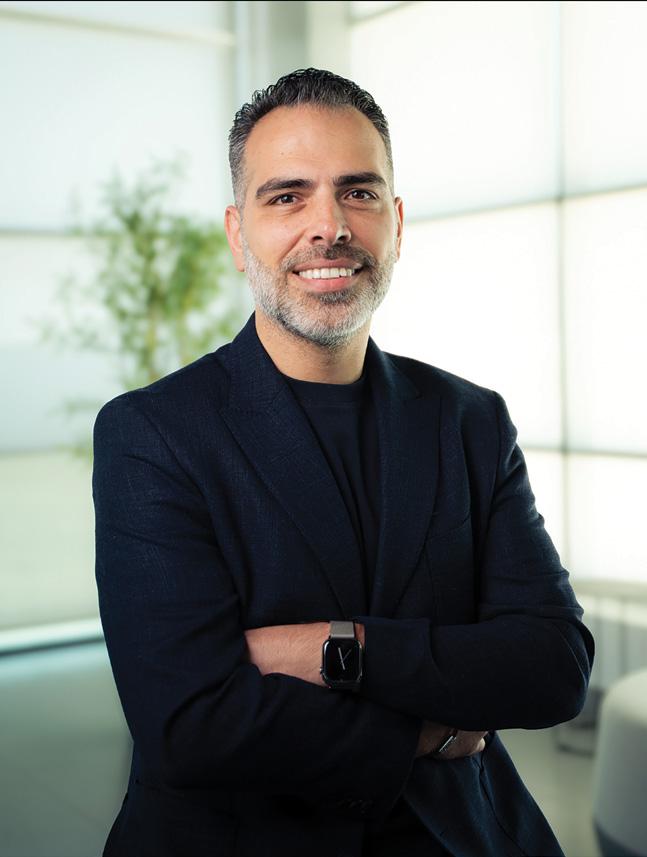
documentation is encouraged to reduce paper usage, and partnerships with green logistics providers are under evaluation to further minimise the company’s carbon footprint.
Sustainability is deeply embedded in Brands For Less’ ESG (Environmental, Social, and Governance) framework, which guides its commitment
to responsible supply chain management. Initiatives include:
• Solar panel installations across warehouses, head offices, and flagship stores
• Waste segregation and recycling programmes for both trade and non-trade waste, alongside partnerships with recycling companies for further processing and upscaling

• Optimised transportation logistics to reduce fuel consumption and CO₂ emissions
• LED lighting retrofits in warehouses and offices to cut energy usage
• Digitisation of supply chain documentation to reduce paper waste and improve transparency
• Supplier engagement programmes focused on carbon reduction and sustainable packaging
• Board-level oversight of ESG strategy and performance to ensure long-term accountability
These efforts reflect the company’s long-term vision
to build a resilient, ethical, and environmentally responsible supply chain that supports both business performance and sustainability.
Digital innovation is a key enabler of Brands For Less’ competitive advantage, allowing operations to run with greater speed, precision, and intelligence. The company leverages advanced technologies across its network — from automated warehousing and real-time inventory visibility to data-driven forecasting and intelligent supply chain optimisation. These tools allow Brands For Less to quickly adapt to market shifts and reinforce its position as the leading off-price retailer in the region.
Customer experience remains central to the company’s strategy. In-store, Brands For Less curates a treasure-hunt shopping experience with daily fresh assortments and clear visual merchandising. Online, it ensures fast delivery, easy returns, and a seamless user interface. By making iconic brands accessible at unbeatable prices, the company continues to spread smiles and drive loyalty.
Customer loyalty is nurtured through consistent value, exceptional service, and personalised communication via digital channels and CRM systems. Active feedback loops allow the company to refine offerings continuously based on real customer insights.


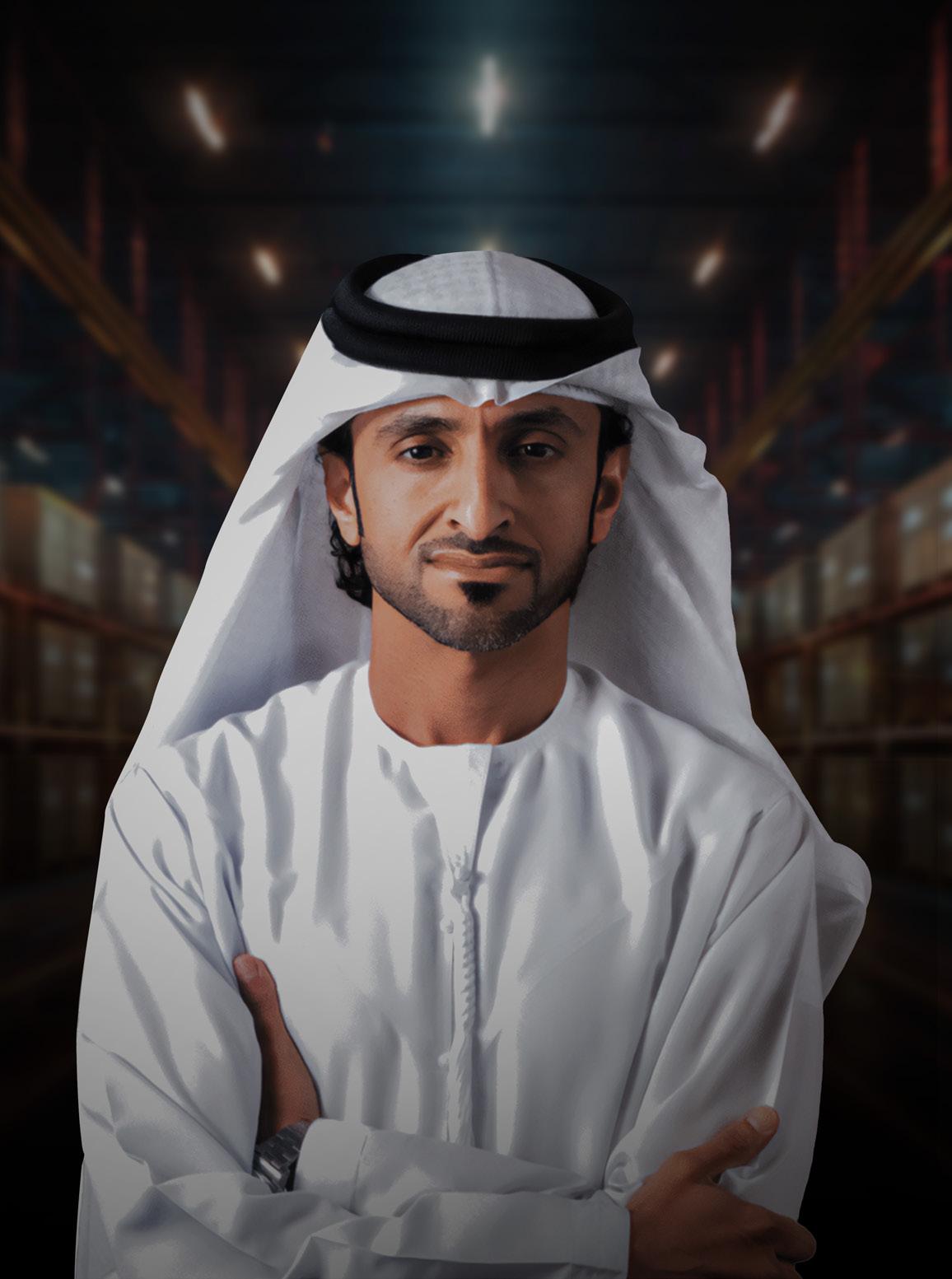

Tariq Al Wahedi, Group CEO of 7X, is turning the company into more than a logistics giant as he builds a connected force from data to doorstep
In April 2025, 7X - the UAE-based investment and holding group operating across trade, transport, and logistics - announced the appointment of Tariq Ahmed Al Wahedi as its new Group CEO, following approval from the Board of Directors. This strategic move marks a pivotal moment in 7X’s ongoing organisational and operational transformation, aimed at reinforcing its position both locally and globally, while driving accelerated growth and innovation across its portfolio of subsidiaries.
Al Wahedi brings more than 20 years of leadership experience spanning logistics, CEP solutions, investment, agri-food technologies, and venture capital. In his most recent role,
as General Manager of EMX, he successfully led the company’s strategic expansion, solidifying its role as a regional logistics leader. Throughout his career, he has held senior roles across multiple industries, spearheading transformative strategies, overseeing complex mergers and acquisitions, and attracting significant foreign direct investment. With his breadth of expertise and forward-thinking leadership, Al Wahedi is well poised to propel 7X into its next chapter of ambitious growth and global influence. In this exclusive interview, Al Wahedi shares his vision for 7X’s future, the strategic priorities shaping its next phase of growth, and how the Group plans to redefine the logistics and trade landscape through innovation, integration, and investment.

You’ve just stepped into one of the UAE’s most ambitious trade, transport and logistics groups. What’s the first bold move on your radar as Group CEO of 7X?
Reimagining 7X not as a traditional operator, but as an enabler of commerce and connectivity. This marks a significant shift: one focused on accelerating the integration of our digital infrastructure and physical assets
to build a seamless, data-driven logistics ecosystem. In doing so, we are transforming logistics from a fragmented experience into a unified national platform — one that removes friction, eliminates bureaucracy, and brings integrated services under one roof.
We are embedding advanced technologies that drive interoperability, transparency, and

speed, while forging strategic public-private partnerships to create seamless access to all our services. This is to position 7X at the heart of the UAE’s transformation - for a future where logistics powers economic resilience, digital inclusion, and future industries. Our
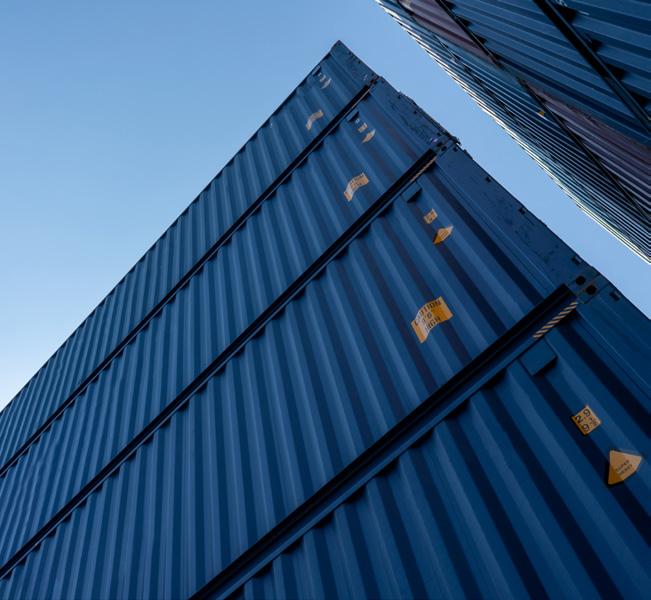
focus extends beyond operational efficiency, to create a trusted, accessible, and easy journey for the people and businesses we serve.
Transformation is a buzzword, but what does real, boots-on-theground transformation look like at 7X under your leadership?
At 7X, transformation means outcomes, not just initiatives. It’s about building platformbased infrastructure that is agile, scalable, and dataenabled. We are operationalising transformation through tangible moves like restructuring delivery
ecosystems, digitising the entire parcel journey, launching fintech solutions that empower SMEs, and embedding ESG principles into our operations. We are also innovating systems that adapt in real-time, developing platforms that scale with market shifts, and providing frontline teams with the tools and autonomy to lead change.
Whether it’s digitising our delivery networks or redesigning service models, every initiative is designed to activate the UAE’s national priorities - from AI and EV adoption to enhancing customer trust and global trade facilitation. Transformation is no longer a back-office ambition; it’s a front-line reality.
Is 7X going to lead the logistics game, or reinvent it? What makes your model different from regional players?
We are not here to lead an existing model - we are here to set a new benchmark. Our competitive edge lies in the convergence of infrastructure, regulation, technology, and capital. We operate as a digitally
last-mile fleets to AI-powered distribution models, we are building logistics for the next era.
We are also building infrastructure that’s open, modular, and ready for Web3, IoT, and cross-border innovation. Unlike others who optimise within silos, we ensure cross-domain impact to create shared value at a national scale.

intelligent ecosystem, integrating freight, express, fulfilment, and fintech through AI, automation, and predictive logistics. From drone deliveries and electrified
What sets us apart is our ability to move fast, think big, and execute with precision across every layer, from e-commerce fulfilment to national logistics infrastructure.
Everyone’s talking digital, but how is 7X bringing the UAE’s digital economy vision to life through its logistics footprint? For 7X, digital transformation goes beyond adopting tools, it’s about shaping entire ecosystems. We are actively contributing to national dialogues like the Policy Hack with UICCA and Amazon, helping to define the regulatory frameworks that will power EV adoption and smart mobility. Our logistics platforms are designed to be interoperable, datarich, and future-ready, laying the foundation for a truly digital supply chain that supports e-commerce, fintech, and government services alike.
Moreover, our infrastructure is APIready, cloud-native, and fully aligned with national platforms such as UAE Pass, TAMM, and MOHRE. From a technology standpoint, we are driving digital transformation through initiatives like the CEP marketplace, the Digital P.O. Box and our carrier-agnostic PUDO logistics network. These ventures highlight 7X’s role as the execution engine of the UAE’s digital economy, not just as a service provider.
What makes the UAE a uniquely powerful launchpad for a logistics and trade powerhouse like 7X?
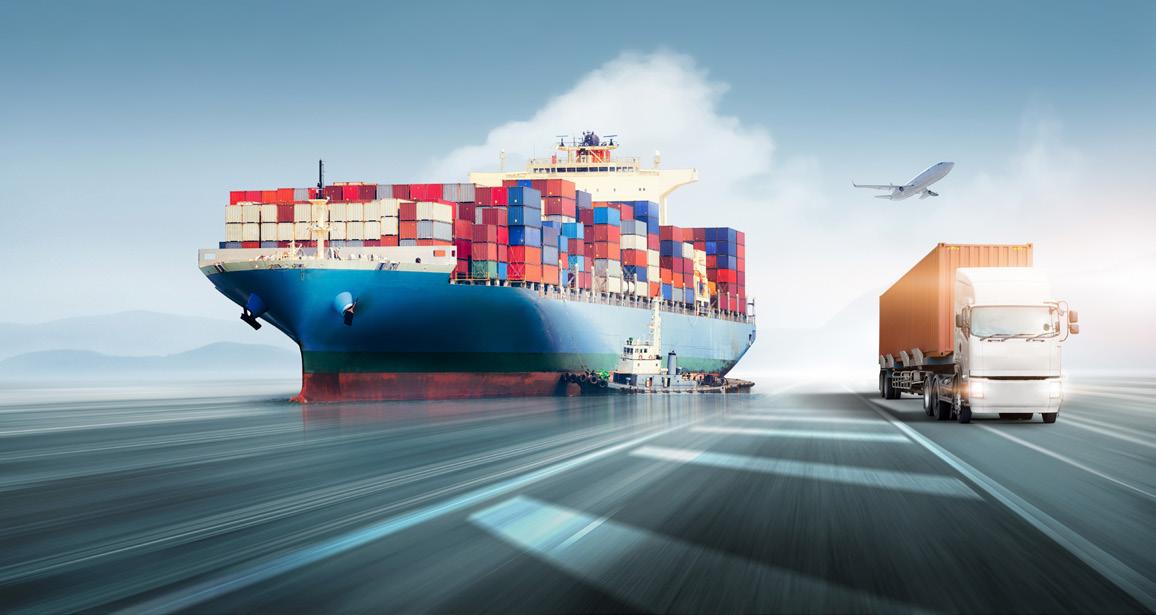
The UAE features a rare blend of regulatory foresight, infrastructure sophistication, and global connectivity, making it one of the few places where ambitious ideas can seamlessly move from concept to deployment. It’s a place where global ambition meets fast execution, due to its strategic geographic position, commitment to innovation, and investorfriendly climate.
Hence, we are not constrained by legacy systems but empowered by a national ecosystem that enables bold experimentation, rapid scaling, and regional leadership. Whether it’s piloting drone delivery corridors or redefining postal franchising, the UAE is both our proving ground and springboard to shape the future of logistics within this region and beyond.
What kind of leadership culture are you cultivating at 7X, and how do you keep teams aligned in a high-speed, high-stakes industry?
At 7X, we are building a culture of entrepreneurial accountability - where leaders at every level think like owners, act with urgency, and are empowered to deliver outcomes. We prioritise clarity of purpose, cross-functional collaboration, and continuous development through open lines of communication, collective decision-making, and an unwavering commitment to learning. In a fast-moving ecosystem, alignment isn’t about control, it’s about shared vision and real-time transparency. We ensure this through structured governance, agile delivery models, and
open communication, wherein our people are not just executors of a strategy but architects of the future.
What’s one big disruption you think the logistics industry isn’t ready for, and how is 7X getting ahead of it?
The next disruption in logistics will be driven by the convergence of automation, robotics, sustainability, and smart regulation. It’s no longer just about speed, it’s about operating in a carbon-regulated, AI-governed, and data-sovereign environment characterised by agility and precision.
At 7X, we’re not just adapting to this future, we are building it by working with regulators, tech innovators, and climate institutions to futureproof our capabilities, through drone logistics, electric vehicle adoption, and AI integration. We are also rolling out EV-ready infrastructure, enabling regulated drone corridors, piloting robotic automation in fulfilment, and deploying AI-driven compliance and optimisation systems, to make our network faster, smarter, and greener.
Presently, logistics is evolving into a nationally integrated, automated utility - one that enables same-day delivery, meets climate targets, secures digital infrastructure, and powers trade. At 7X, we are laying the foundation for a future where logistics is not just a service, but a sovereign platform for sustainable growth and innovation.
Fawad Ahmed Mian, CPTO & CoFounder of Mile, is on a mission to simplify logistics with a platform that thinks, acts, and scales as one

Mile has established itself as one of Saudi Arabia’s most advanced logistics technology providers. It is not just another logistics software company but the architect of the industry’s fully integrated Multi Modal Logistics platform, unifying every aspect of logistics management through a single codebase.
The company is revolutionising logistics through the world’s first truly integrated AI-powered platform. Its mission is clear: to eliminate the complexity that has challenged logistics operations for decades by delivering a unified solution that works seamlessly out-of-the-box.
As CPTO at Mile, Fawad Ahmed Mian has witnessed firsthand how fragmented systems have held back the logistics industry. His background in Enterprise Solutions has driven the company’s focus on creating
technology that genuinely solves real operational challenges rather than adding further complexity.
The Saudi logistics landscape has long been dominated by fragmented systems, forcing businesses to juggle multiple platforms, APIs, and vendors simply to gain basic visibility. As a result, many companies have found themselves spending more time managing their technology stack than optimising operations.
Mile has addressed this complexity with a unified architecture that integrates Order Management, Warehouse Management, Transportation Management, CRM, Shipping Aggregation, and Omni-Channel Communication into a single, seamless solution—requiring no custom coding and eliminating technical headaches. What traditionally took months of
integration and development can now be deployed within days. As a result, businesses are achieving levels of operational excellence previously thought unattainable, empowered by technology that truly supports their workflows rather than complicating them.
Mile is proud to introduce Milo, the region’s first AI Logistics Agent. Far beyond standard automation, Milo represents true artificial intelligence that makes autonomous decisions across the entire supply chain, while keeping data secure on local grounded environments.
Drawing on real-time data from all of Mile’s platform modules, Milo delivers advanced capabilities including autonomous route optimisation, predictive inventory management, intelligent order prioritisation, proactive customer communication, and
dynamic pricing optimisation. Effectively, it serves as an expert logistics manager operating 24/7, enhancing efficiency and performance across every aspect of the operation.
Milo isn’t just processing data—it’s making intelligent decisions that improve with every operation. It’s the difference between automation and actual artificial intelligence.
Unified Platform Architecture
The company’s breakthrough is the unified codebase approach. While competitors require complex integrations between separate systems, every Mile module was built to work together from day one.
Mile’s unified architecture enables seamless integration across all core logistics functions:
• OMS & WMS: When an order comes in, Mile’s OMS immediately coordinates with WMS for optimal fulfilment without any data transfer delays or synchronisation issues.
• TMS Integration: Transportation planning happens in real-time using live order and inventory data, enabling dynamic route optimisation that traditional systems simply can’t achieve.
• CRM Connectivity: Every customer interaction, delivery update, and service issue is automatically logged and accessible across all modules, creating a complete customer view.
• Shipping Aggregator: Mile connects with multiple
carriers through one interface, with Milo automatically selecting optimal shipping methods based on real-time conditions and customer preferences.
• Omni-Channel Communication: Customers receive coordinated updates across SMS, email, WhatsApp, VOIP Calls and in-app notifications—all triggered by the same system events.
The logistics industry has been held back by the false belief that best-of-breed means separate systems. Mile has proven that true best-of-breed means unified architecture where every component enhances every other component.
The company supports every logistics operation mode through one integrated platform: first-mile supplier integration, middle-mile distribution, last-mile delivery, and reverse logistics for returns. Each operation shares the same data foundation, enabling complete supply chain visibility.
Mile’s integrated approach has delivered significant operational improvements for businesses across Saudi Arabia. Companies report streamlined processes, enhanced inventory accuracy, and improved customer satisfaction— all because they’re finally working with technology designed to integrate rather than fragment their operations.
Mile is not merely participating in
the logistics technology market— it is actively defining its future. As the first to introduce a fully integrated AI platform and the world’s first AI Logistics Agent, the company has established a clear position of technological leadership.
Unlike competitors that require businesses to manage multiple vendors and complex integration projects, Mile delivers enterprisegrade logistics management as a fully unified, off-the-shelf solution—eliminating the need for custom development, technical dependencies, or vendor management complexity.
Future of Logistics in Saudi Arabia Mile believes the future belongs to platforms capable of delivering intelligent automation across fully integrated systems. Milo marks only the beginning of what becomes possible when AI is granted access to complete, realtime operational data.
As Saudi Arabia accelerates its digital transformation under Vision 2030, the need for scalable, future-ready logistics solutions is more critical than ever. Mile’s unified platform provides the technological foundation required to support the Kingdom’s economic diversification and growth ambitions.
The company continues to enhance Milo’s AI capabilities and expand overall platform functionality, unlocking a level of sophisticated automation that fragmented systems are simply unable to achieve.
In this interview with Mohamed Salah Al-Sulaim, CEO of MAS Logistics, we explore how the company is transforming warehousing into a powerful competitive advantage for businesses across industries

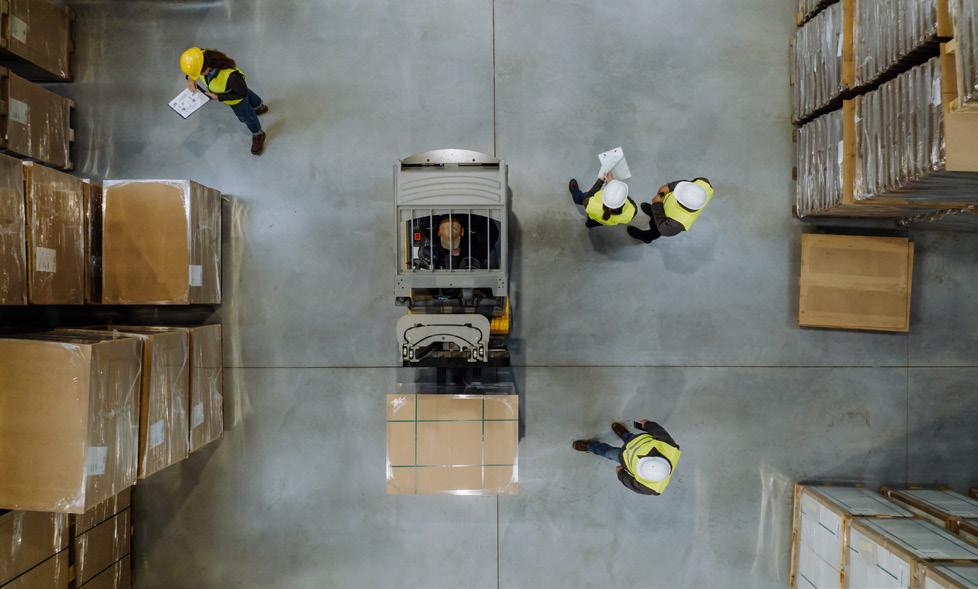
Can you share your journey and the story behind the growth of MAS Logistics?
As the CEO of MAS Logistics, I’ve always believed in the power of operational excellence and long-term partnerships. Since founding MAS Logistics in 2021, we’ve grown from a single warehouse with a capacity of 5,000 pallets to a leading 3PL provider with over 50,000 pallet spaces across Saudi Arabia.
MAS Logistics specialises in thirdparty logistics, with a focus on scalable warehousing solutions and supply chain support for a diverse range of sectors— from food and retail to healthcare and electronics. We combine strategic infrastructure with professional teams
to offer flexible storage contracts, advanced inventory systems, and a deep commitment to customer success.
What is warehousing about nowadays? How do you turn a warehouse into a competitive advantage, not just a holding space?
Today, warehousing is no longer just about storing goods—it’s about enabling businesses to move faster, reduce overhead, and gain better control of their operations. At MAS, we’ve built our model around turning storage into value creation. Our warehouses are equipped with real-time inventory tracking, temperature-controlled zones, and optimised workflows that reduce waste and enhance efficiency.

Clients choose us because we don’t just hold their inventory—we help them scale, pivot, and serve their customers with precision and speed.
How are your clients’ expectations of storage changing?
Clients now expect flexibility, visibility, and integrated solutions. Gone are the days when a fixed rack and long-term lease were enough. Businesses today demand customisable spaces, short-term contracts, and access to real-time inventory data.
That’s why at MAS Logistics, we offer flexible contracts, smart warehousing systems, and scalable options tailored to growth stages. Whether you’re a startup shipping 100 orders a month or an enterprise managing thousands,
we adapt to your model—not the other way around.
If a product sits in storage for 60 days, what’s that costing the client, and how do you flip that into value?
Every day a product sits idle, it costs the client in terms of cash flow, opportunity, and storage fees. That’s why we work closely with clients to understand their inventory turnover goals and build systems that support faster movement. We offer inventory analytics, cycle count scheduling, and cross-docking options to minimise idle time. For some sectors, we also provide fulfilment support and order prep, helping clients reduce dwell time and convert logistics costs into business gains.
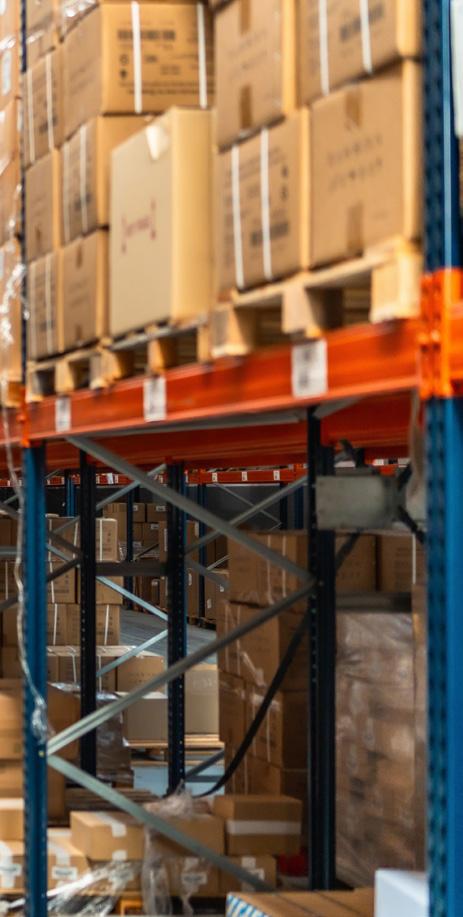
What does a ‘bad’ warehouse look like? and how do you make sure MAS never becomes one?
A bad warehouse is one that lacks structure, transparency, and safety. Disorganised layouts, lost inventory, poor cleanliness, and weak communication with clients all contribute to costly mistakes and a lack of trust.
At MAS, we prevent this by maintaining strict operational SOPs, investing in training, and regularly upgrading our systems. Our warehouses
are monitored, licensed by the Saudi Food and Drug Authority, and audited internally to ensure high service levels are consistently delivered.
What’s something 90% of clients misunderstand about warehousing?
Many clients initially see warehousing as a passive cost center—just a place to keep goods. In reality, warehousing
is a core driver of supply chain performance. It can impact customer satisfaction, financial agility, and business scalability.
At MAS Logistics, we help clients understand that warehousing is not just storage—it’s a strategic tool. By using the right solutions, clients can increase their order accuracy, reduce returns, and free up resources to focus on growth.
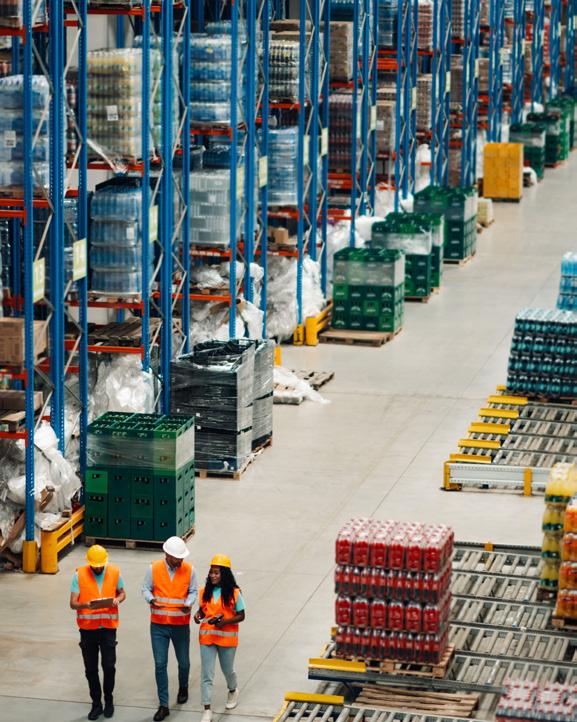
Experts Ioannis Manolas, Kostas Sakellariou, and Kostas Orietas from IBLS explore the transition from conventional to automated warehousing, highlighting key design elements and emerging technologies shaping the future of logistics

From the initial stages of designing a conventional warehouse, one of the primary challenges lies in ensuring the facility’s capacity for the gradual integration of automation systems, aligned with evolving market demands. As such, the warehouse must be pre-configured to accommodate the phased implementation and operation of automation—from 0% to 100%.
This transition encompasses the deployment of static storage
systems, very narrow aisle (VNA) racking, Automated Guided Vehicles (AGVs), and Automated Storage and Retrieval Systems (AS/RS) for pallets or totes. These technologies are complemented by advanced order picking and consolidation systems.
Design–Build Methodology
Fundamentally, the warehouse must be designed and constructed in a way that aligns the building and

electromechanical infrastructure with a roadmap enabling full automation. This process is highly intricate and requires meticulous planning and construction of:
• A flexible structural grid (including technical corridors and mezzanines)
• Industrial flooring (considering flatness and both static and dynamic load capacities)
• Fire suppression systems (with or without sprinklers)
• Power distribution and electrical support networks
• Adaptable fire compartments and protective measures for the structural framework
Implementing these provisions during the design phase may increase initial costs by 5% to 8%. However, failure to incorporate these considerations early on can lead to costs more than double—or even higher—during later retrofits.
The installation of storage systems and associated mechanical infrastructure (e.g., HVAC, lighting, fire protection, surveillance), as well as the construction of industrial floors suitable for warehouse operations, must strictly adhere to the initial design specifications.
Project Delivery Phases
1. Concept Design (CD) – Data Collection, Design Brief Validation
2. Schematic Design (SD)
3. Detailed Design (DD) + Issued for Construction Drawings (IFC)
4. Shop Drawings and Construction, incl. Testing & Commissioning (CON)
5. Project Completion, Handover and Certification (COM) Project Management must enforce strict adherence to the approved design, overseeing every construction detail and documenting permissible changes that may arise during execution.
All deliverables—construction and maintenance documentation, detailed inspection checklists, etc.—must be available to the Project Manager, including “As Built” drawings and O&M (Operation & Maintenance) manuals. These form the foundation for safe and effective system commissioning and asset handover.
Constructing a warehouse facility capable of addressing a full range of operational requirements—from standard selective racking to full or partial automation—is a complex


undertaking. To enable optimal performance management, this foundational design and documentation process must be completed thoroughly.
Based on this comprehensive database, protocols can be established for system monitoring, facility supervision, asset management, and maintenance of all supporting electromechanical systems, industrial flooring, and equipment. Coupled with continuous regulatory analysis and compliance processes, this ensures seamless operation and optimal utilisation of a flexible warehouse. Moreover, the integration of real-time monitoring systems and data-driven optimisation mechanisms forms the basis for enhancing both the operational and economic efficiency of the facility.
What, then, are the core automation systems, what needs do they fulfil, and why must modern warehouse design anticipate their future implementation?
In recent years, warehouse automation technologies have emerged as transformative forces in logistics. Advanced solutions such as Automated Guided Vehicles (AGVs) and Automated Storage and Retrieval Systems (AS/ RS) are redefining traditional storage paradigms, driving gains in efficiency, accuracy, and overall productivity.
AGVs are autonomous or semiautonomous mobile robots that navigate warehouse environments to transport goods between locations. Equipped with sophisticated sensors and navigation systems, AGVs operate safely and efficiently, eliminating manual handling, reducing human error, and streamlining material flow. They are now vital to order fulfilment operations, ensuring timely and accurate delivery.
AS/RS automate the storage and retrieval of goods and typically consist of high-density racking, Storage and Retrieval Machines (SRMs), conveyor systems, and control software. These systems optimise vertical space utilisation, maximising storage capacity and enabling rapid access to products at the pallet, case, or item level.
A global trend shaping the future of warehouse automation is the integration of Artificial Intelligence (AI). AI empowers systems with advanced data analytics, machine learning algorithms, and predictive capabilities, enhancing their efficiency, adaptability, and autonomy. Additionally, the adoption of collaborative robotics, where robots and humans work in synergy, allows for safe, efficient, and intelligent execution of complex tasks requiring human oversight and dexterity.
Automation systems must be integral to the planning of any modern warehouse. AGVs and AS/RS offer scalable, precise, and safe solutions that reduce labour costs while enhancing productivity. Emerging global trends such as AI integration and collaborative robotics are pushing the boundaries of traditional automation, fostering continuous innovation and improved performance across storage operations.


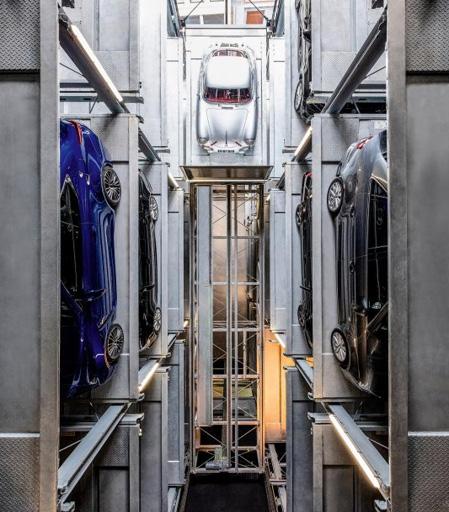


AI is revolutionising logistics across the Middle East—but not without raising eyebrows. Is it a breakthrough or a brewing storm?

Words by: Vibha Mehta
The Middle East is quickly emerging as a logistics powerhouse, taking advantage of its strategic location as a global trade hub while investing significantly in infrastructure, ports, and free zones. Amid this growth, artificial intelligence (AI) is revolutionising the sector, offering remarkable potential to streamline operations, reduce costs, and enhance delivery efficiency. However, alongside these advancements, AI raises challenging questions about job displacement, data ethics, and the risk of losing human oversight.

In practical terms, AI is assisting logistics companies in predicting and optimising routes, as well as automating
warehousing. Major players in the Gulf region, such as DP World, Aramex, and Agility, are already incorporating AI into their operations to improve supply chain visibility and reduce turnaround times. Innovations like autonomous vehicles, AI-

powered robotics, and machine learning algorithms are facilitating faster cargo handling, predictive maintenance, and smarter inventory management. These advancements not only lower operational costs but also enable businesses to scale more precisely—a critical capability as the region aims for global logistics leadership under longterm strategies like Saudi Vision 2030 and the UAE Industry 4.0 initiative. The impact of AI goes beyond operational efficiency; it also enhances decision-making. By utilising real-time data and predictive analytics, logistics providers can foresee disruptions, dynamically manage resources, and offer more reliable delivery experiences. In areas with harsh climate conditions and vast desert landscapes, AI-powered drones and autonomous ground vehicles are proving valuable for lastmile delivery to remote or difficultto-access locations. This is especially important in rapidly growing e-commerce markets, such as Saudi Arabia and the UAE, where customer expectations for quick fulfilment are increasingly high.
Nonetheless, these opportunities come with significant concerns. The automation of traditionally labour-intensive logistics processes poses a threat to employment, particularly for low-skilled workers. In country-nationalisation programs, the aim is to create more jobs for citizens; however, AI-driven displacement may clash with broader economic goals. This challenge intensifies when AI is deployed without upskilling or reskilling the existing workforce, widening the digital divide and potentially leading to economic disenfranchisement.
Additionally, AI in logistics requires massive amounts of data, including
information on routes, drivers, customers, and inventory. This raises urgent concerns regarding data privacy and security, particularly in a region where data governance laws are still in development. The potential for misuse or leakage of sensitive commercial and consumer information can undermine trust and attract regulatory scrutiny. There is also the concern that AI systems might perpetuate biases in decision-making if algorithms are not trained on diverse, ethically sourced data.
Another issue is the over-reliance on technology. Logistics is a complex ecosystem that often requires human intuition, especially in crisis scenarios such as political instability, border conflicts, or pandemics. While AI is fast and efficient, it may lack the adaptability and nuance needed in unforeseen situations. A complete shift toward machine-driven logistics risks losing the human flexibility that has historically defined the industry’s resilience.
Despite these challenges, one truth stands out: AI is here to stay. The question is no longer whether to adopt AI, but how to integrate it responsibly. Industry leaders in the Middle East must find a careful balance—leveraging AI to boost efficiency and competitiveness while protecting jobs, privacy, and human judgment. Governments also have a role to play in crafting frameworks that foster innovation without compromising ethical and socio-economic principles.
As the logistics sector continues to evolve, AI will remain both a promise and a challenge. The Middle East is at a crucial crossroads; the choice to embrace AI as an enabler or approach it with necessary caution will shape the logistics industry’s future for decades to come. The solution may not lie in choosing sides but in designing a future where both human and artificial intelligence can coexist, each enhancing the other’s strengths while addressing their blind spots.


In logistics, it’s not the size of your fleet that shapes sustainability, it’s the agility and grit of small players rewriting the supply‑chain rulebook

As a member of Impact Innovation Board, Khadeeja merges creative strategy, emerging trends, and community building to drive transformation. With a Fine Art background and a passion for cultures, she crafts impactful narratives bridging startups, industry insights, and public-private sectors.
Words by: Khadeeja Hamid

We often equate sustainability with scale, electric fleets, megawarehouses, billiondirham eco-hubs. But across the GCC, the most meaningful change might be in the smaller, smarter spaces. From micro-warehousing to circular supply chains, local startups with leaner operations are proving that going green isn’t about scale. It’s about sharper systems, lighter footprints and real impact.
The COP28 ripple lingers. DHL, DP World, and Agility are doubling down on green fleet rollouts and biofuel corridors, but real transformation often happens under the radar. We’re talking about lean GCC logistics SMEs and startups: small fleets, micro-hubs, data-driven routing,
that are quietly cutting carbon and cost. Their moves may not make headlines, but they’re rewriting what it means to move goods sustainably.
When Margins
Shrink, Innovation
Thrives
Profit pressure breeds ingenuity. Quiqup, born in the UAE in 2014, has expanded into KSA with on-demand e-commerce delivery and fulfilment, growing under less than 200 staff and fleet drivers, optimised by tech, not scale. Less assetheavy, more agile. 7X and Zelostech, DHL’s 2025 Fast Forward Challenge winner, are rethinking last-mile delivery in the UAE. Together, they’re rolling out Level-4 autonomous, zeroemission logistics systems, driverless electric vehicles that are already operational in China and Singapore. It’s a leaner, smarter approach to urban mobility, aligning seamlessly with the UAE’s innovation and sustainability ambitions.

per drop and fewer failed deliveries. These aren’t token green projects, they’re systems thinking at speed.
Rewriting the Green Narrative
Green Micro‑Hubs & Smart Fleets
Decentralised infrastructure is where the magic happens. Zelostech’s electric vehicle uses AI and autonomy to reduce repeat trips and congestion. Quiqup’s microhubs and last-mile strategies, now racing across KSA, mean fewer miles
The demo is easy. Proven impact is rarer. Fodel (a UAE PUDO network) launched 2,000 pickup/ dropoff points across the GCC, slashing failed-home-delivery miles. Reachware in Saudi deploys real-time routing platforms to reduce idle times tracking metrics, not headlines.
Small logistics firms may lack slick
ESG decks but they deliver measurable change: fewer emissions per parcel, fewer empty miles.
Smart Collaboration
The future of logistics is increasingly collaborative, where big players and startups build off each other’s strengths. DHL’s Fast Forward program actively accelerates homegrown startups into enterprise-scale operations. Quiqup, backed by the Mohammed bin Rashid Innovation Fund, is expanding into Saudi Arabia, aligning its growth with national sustainability goals. These aren’t just partnerships; they’re
part of a thriving ecosystem where established giants fuel lean innovation, and nimble startups inject fresh thinking into regional supply chains.
The biggest logistics challenge in the GCC now? Not fleet size, but adaptability. As megaprojects and e-commerce grow, success hinges on hundreds of micro-decisions: optimised routes, electric vehicles, micro-hubs, smart pickups. These lean players may be smaller, but they’re networked, strategic, and impactful. In logistics, when building green futures, agility often outpaces scale.


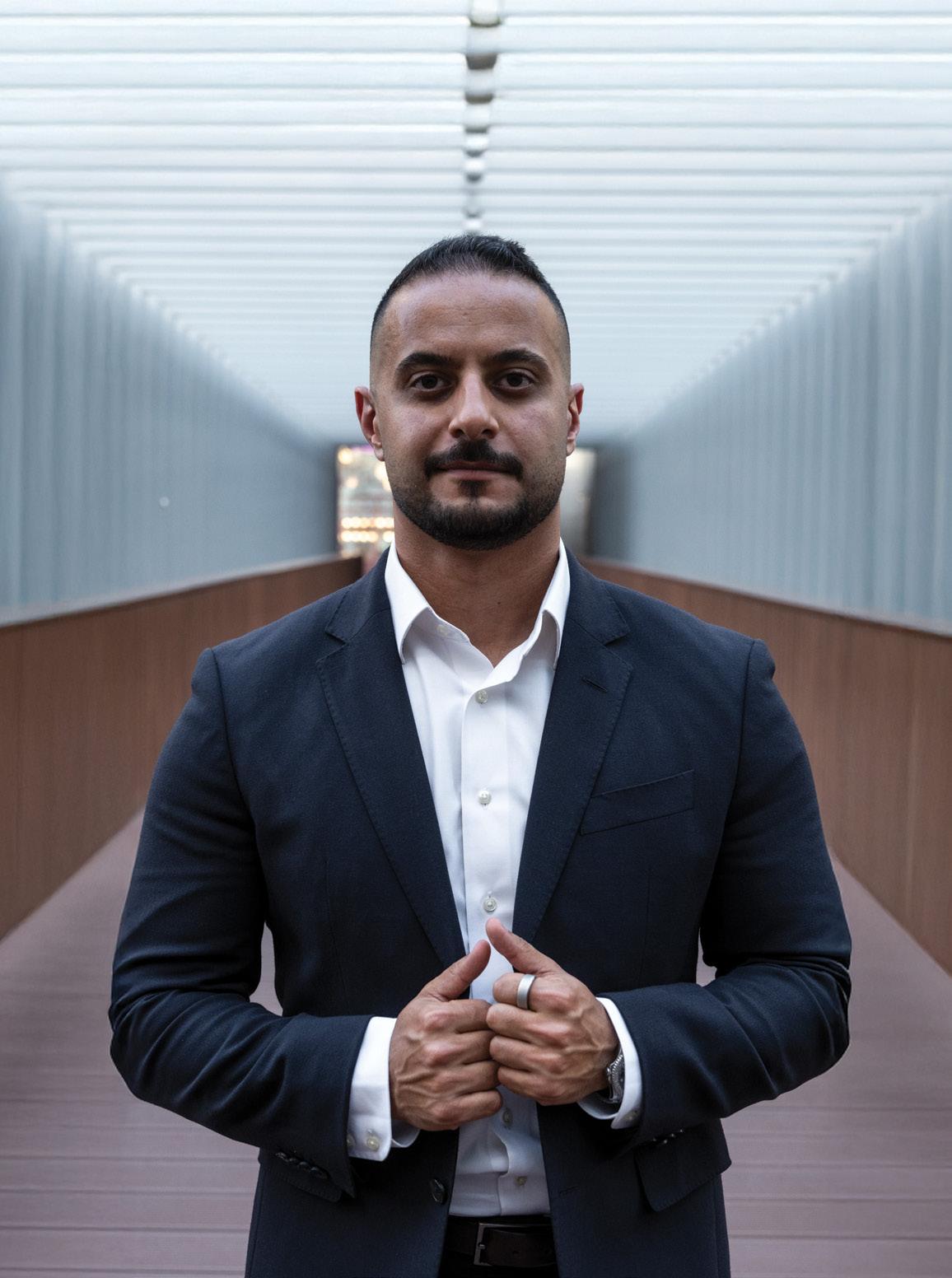
Aron Schiller, Sales Director for CIMC TIANDA GCC & MEA, unpacks what’s driving the next wave of smart logistics in the region
CIMC TIANDA, a subsidiary of China
International Marine Containers (CIMC) Group, is a global leader in intralogistics and automated warehouse solutions. Backed by over 35 years of industry expertise and more than 1,800 global projects, the company’s comprehensive portfolio includes Cargo Handling Systems, Automated Storage and Retrieval Systems (ASRS), Conveyor Systems, AGV/AMR Solutions, Digital Twin Software, and Warehouse Control Systems. Its endto-end integration approach supports a wide range of industries, including e-commerce, 3PL operations, cold chain logistics, retail and wholesale, food and beverage, pharmaceuticals and healthcare, industrial and petrochemical sectors, as well as express logistics such as post and parcel last mile delivery.
The GCC and MEA regions offer unique opportunities driven by rapid urbanisation, e-commerce growth, and strategic trade corridors, such as the UAE’s gateway status. CIMC TIANDA’s strategy focuses on high-density, vertical automation to address spatial limitations— particularly important in markets like the UAE and Saudi Arabia. Their solutions, including multi-level automated
storage systems, dynamic slotting algorithms, and modular designs, maximise warehouse capacity without expanding physical footprints. The company also prioritises climate adaptability, providing temperaturecontrolled solutions for pharmaceuticals and ruggedised systems for heavy industries. With sustainability goals like the UAE’s Net Zero 2050, CIMC TIANDA is working to integrate solar-powered warehouses and energyefficient robotics. Believing that local partnerships are key to success, the company is expanding its presence through collaborations with regional distributors and tech providers, ensuring compliance with customs regulations and cultural nuances.
The next few years present several exciting opportunities, with three key areas standing out:
1. Smart Ports and Free Zones: Enhanced digital connectivity at hubs like Jebel Ali and King Abdullah Economic City will drive demand for AIdriven cargo handling and customs automation.
2. E-commerce Expansion: With MENA e-commerce projected to surpass USD 50 billion by 2025, automated micro-fulfilment centers and last-mile delivery networks will be critical.
3. Sustainability Investments: Regional governments are incentivising green logistics, with solarpowered warehouses, electric AGVs, and circular supply chains presenting key growth opportunities.
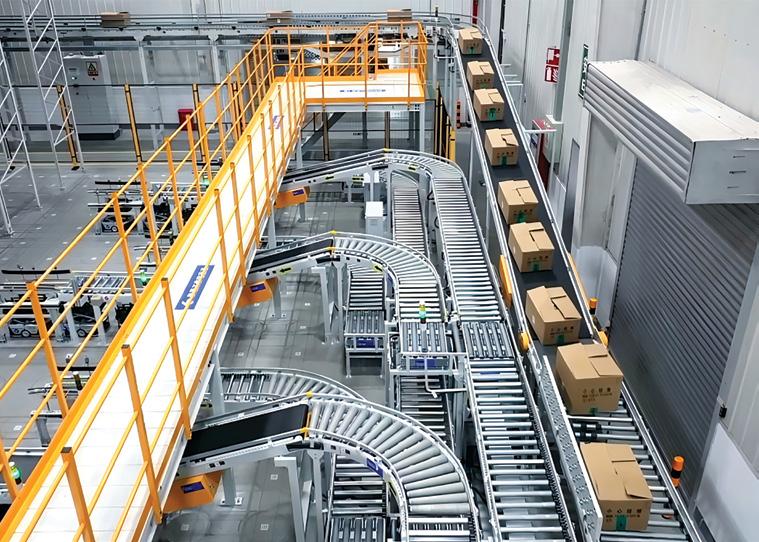
Additionally, GCC nations’ push to diversify economies (e.g., Saudi Vision 2030) will spur logistics investments in manufacturing and cold chain infrastructure, particularly for pharmaceuticals and perishables.
While the GCC’s growth is transformative, it also comes with several challenges, including:
• Climate Extremes: Sandstorms and high temperatures require ruggedised IoT sensors and corrosion-resistant infrastructure.
• Regulatory Complexity: Diverse customs regulations across GCC states demand agile, localised compliance strategies, particularly for pharmaceutical and cold-chain logistics.
• Global Economic and Political Tension: Project life cycles can be highly influenced by governmental policies, government budget shifts due to global supply & demand of Oil & Gas, and multi-tiered stakeholder landscapes with state owned entities under airport authorities. The region is planning exceptional growth by 2030 and 2032, however, regional tensions may alter these plans.
• Digital Maturity vs. Operational Readiness Across Clients: While some regional operators are highly progressive—embracing full automation and digitalisation— others are just beginning the journey from manual to semi-automated operations. This creates a demand for flexible, modular solutions and consultative selling, where the company is not just delivering systems, but driving long-term operational transformation.
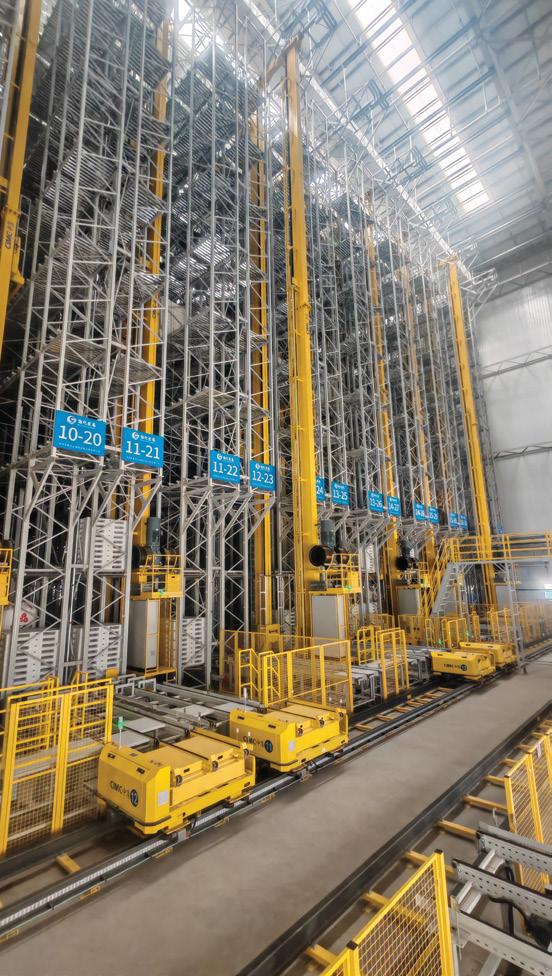
• Lead Times and Cash Flow Expectations Significantly Differ: Capex-heavy investments require stronger risk management and deeper engagement during both
tendering and implementation phases. From a cultural standpoint, success often hinges on local credibility, longterm presence, and agility in responding to evolving political or regulatory dynamics.
Market Consolidation and Strategic Alliances
There are clear signals of strategic realignment across the regional logistics landscape, driven by three major factors: infrastructure mega-projects, national logistics visions (such as Saudi Arabia’s Vision 2030), and the growing role of state backed operators. These drivers are accelerating consolidation in both ground handling and cargo operations, where scale and integration offer cost and operational synergies.
From a warehouse automation and cargo systems perspective, this consolidation creates opportunities for technology providers to form longterm alliances—not just with logistics providers, but also with airport operators, free zone authorities, and investment vehicles.
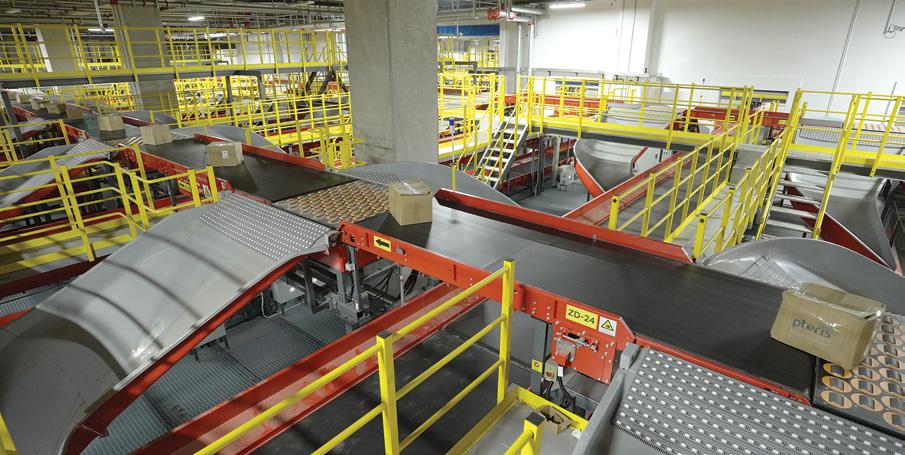
There is an expectation for a stronger trend toward integrated value chains, where warehousing, freight forwarding, lastmile, and even e-commerce fulfilment are unified under large regional players or joint ventures. This positions turnkey system manufacturers and providers like CIMC TIANDA to offer end-to-end automation handling systems linking airside, landside, and warehousing functions together.
Strategic alliances between OEMs, digital solution providers, and infrastructure developers will be critical to meet the scale, speed, and flexibility that regional customers now demand.
Several key trends are emerging that warrant close attention in the global logistics and cargo systems space:
• Hyper-Automation: The convergence of RPA, AI, and IoT to create selfoptimising warehouses.
• Resilient “Nearshoring”: Post-pandemic, companies are regionalising supply chains—boosting demand
for agile, compact automation near production hubs.
• Blockchain Integration: Enhancing transparency in cross-border trade, particularly for high-value or regulated goods.
• Urban Logistics: As cities grow, compact automated storage embedded in retail spaces or metro hubs will redefine last-mile delivery.
• Carbon Accounting Tools: Tech that tracks emissions across supply chains, aligning with global ESG reporting mandates.
For CIMC TIANDA, these trends validate the company’s focus on modularity, AI-driven decision platforms, and green technologies. By staying ahead of these shifts, CIMC TIANDA aims to empower businesses to turn logistical complexity into competitive advantage—both in the Middle East and globally.

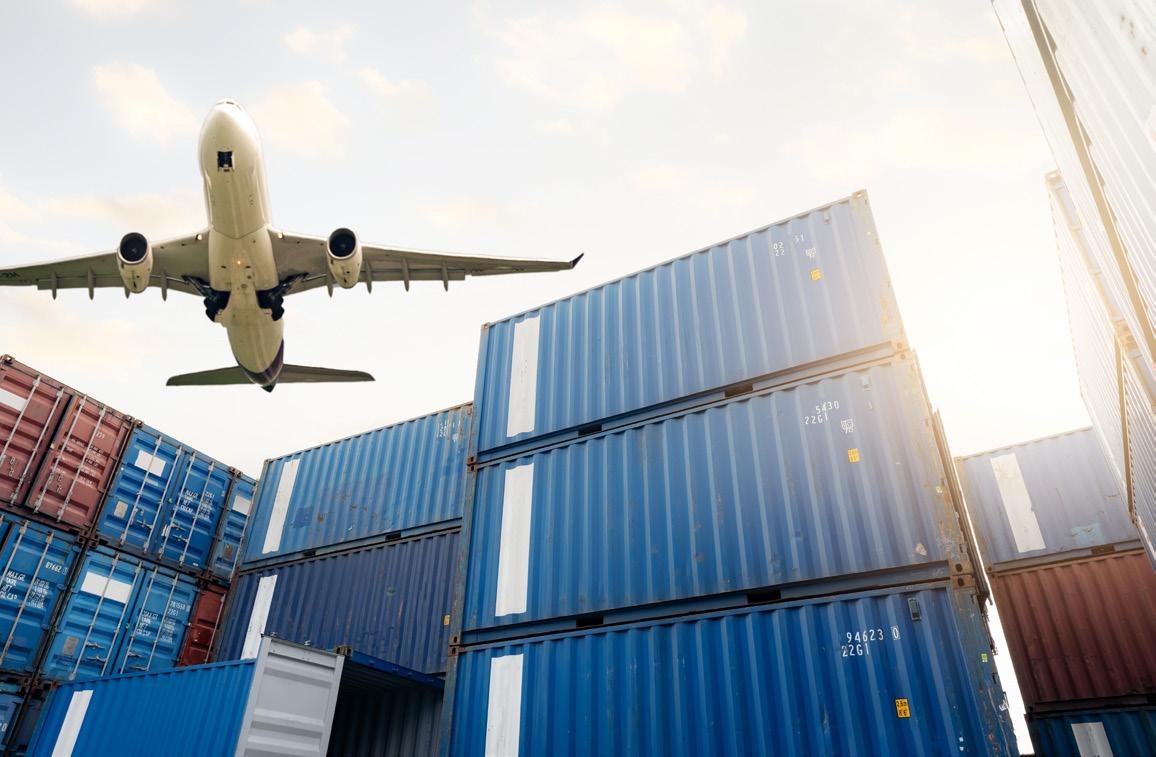
The GCC is in the middle of a logistics revolution, but not always where you’d expect. While megaprojects and smart ports grab the headlines, a second layer of growth is unfolding behind the scenes: logistics supporting nonlogistics sectors. From healthcare to hospitality, agriculture to EVs, it’s the hidden demand fueling a whole new wave of infrastructure and innovation.
Logistics Is No Longer Just a Sector, but a Service Layer
Whether it’s cold chain solutions for pharma, controlled environments for fresh produce, or warehouse space for electric
vehicle parts, businesses across the region are realising one thing: they can’t grow without logistics growing with them.
Healthcare: Demand for pharmagrade storage and compliant distribution is soaring with new hospitals and biopharma expansion.
Hospitality & F&B: Tourism growth equals massive pressure on foodservice supply chains and import handling.
EV & Tech Industries: Battery logistics, high-value component storage, and secure transport are now in high demand.
This hidden growth is pushing logistics players to adapt faster, diversify smarter, and localise deeper. The best operators aren’t just building warehouses, they’re solving industry-specific problems, building custom workflows, and integrating into entire ecosystems.
And for investors? This is a signal. The region’s logistics story is no longer just about cargo, it’s about enabling every other industry to scale.
If logistics is the backbone of the economy, then it’s time to focus on the muscles that make it move and the sectors quietly driving the next wave of demand.
